Are Americans getting healthier?
Americans have faced many health challenges in recent years, from opioid addiction to COVID-19. And accidental deaths are rising. So what does the government spend on health for its citizens?
Up Next
Transcript
In this episode of Just the Facts, Health and Health Care.
I think we can all agree that good health is one of the most important things in life. This leads me to ask, how are Americans’ physical and mental health, and how’s our healthcare system working for us? We’ll focus on the facts. You make your own prognosis. There’s a lot to chew on. Let’s start here. America is getting older, and thankfully, so am I.
The median age in the US was only 30 years old in 1980, 35.3 in 2000, and 38.9 in 2022.
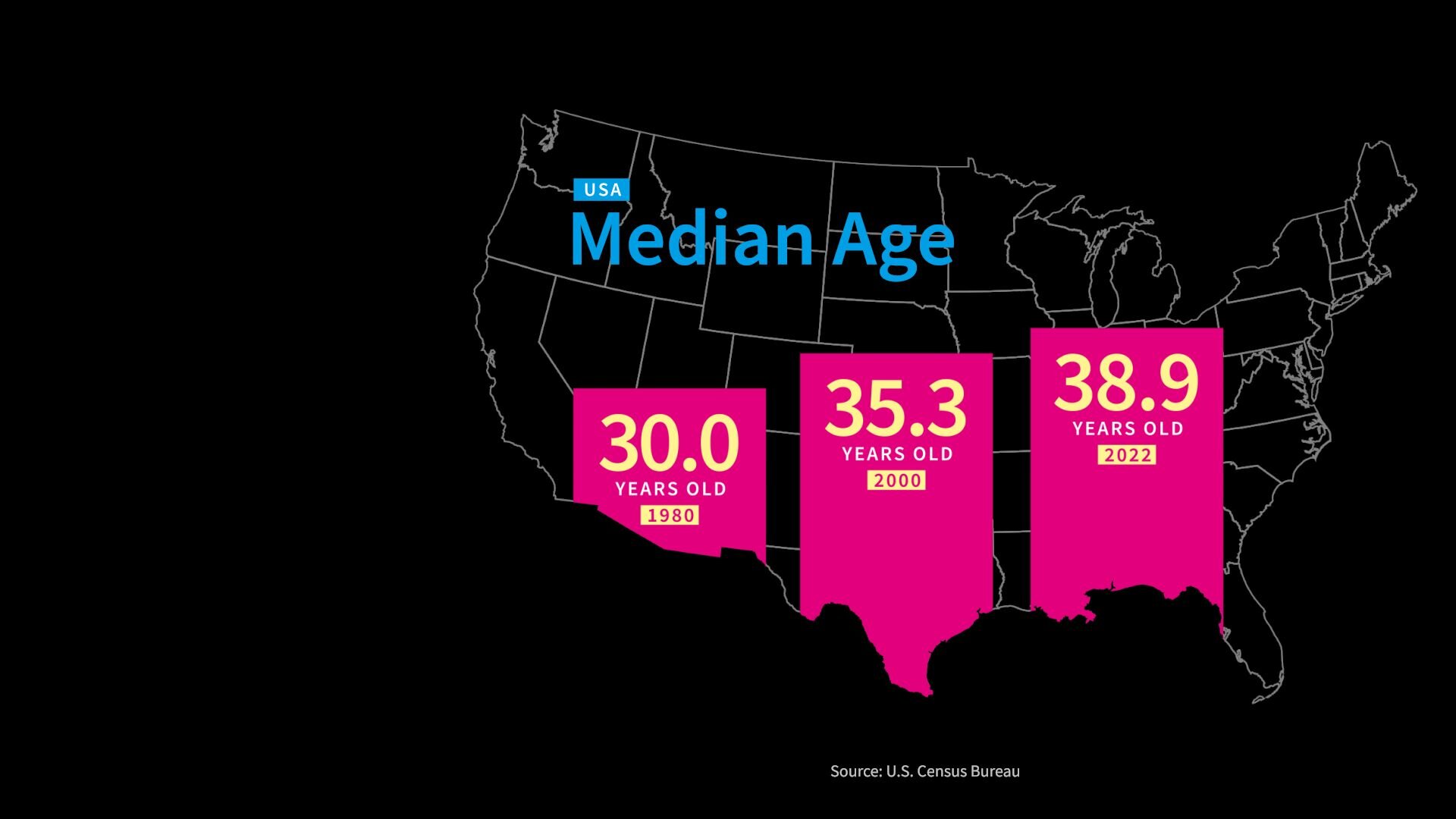
In 2022, 3.28 million Americans died, about 1% of our total population. Nearly 3.67 million people were born.
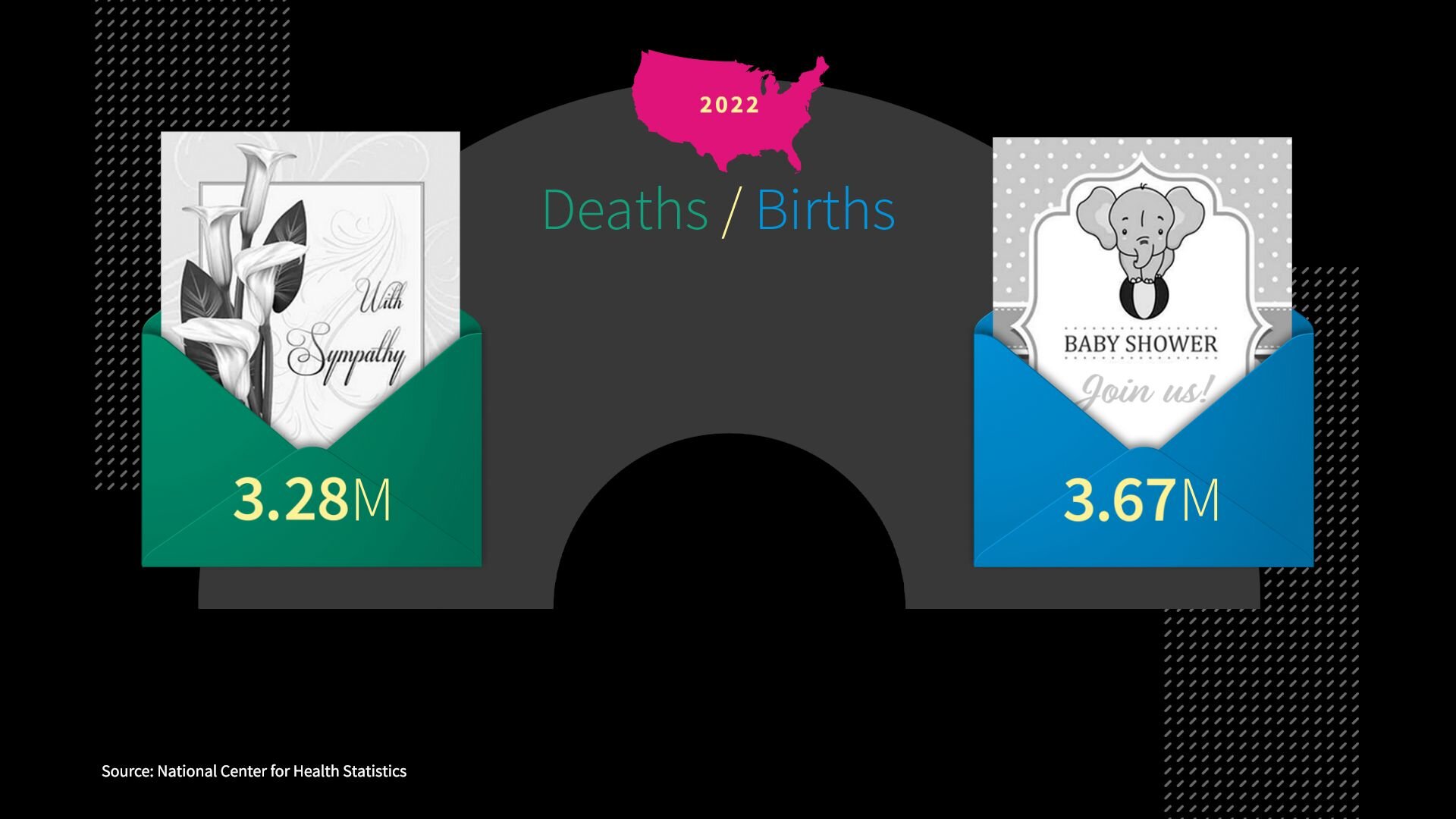
Here are the top causes of death per age bracket as reported for 2022.
Out of 69 million children ages 1 to 17, just over 16,000 died.
About 4,900 of those were from accidents. Unfortunately, 2,100 by homicide and 1,600 by suicide.
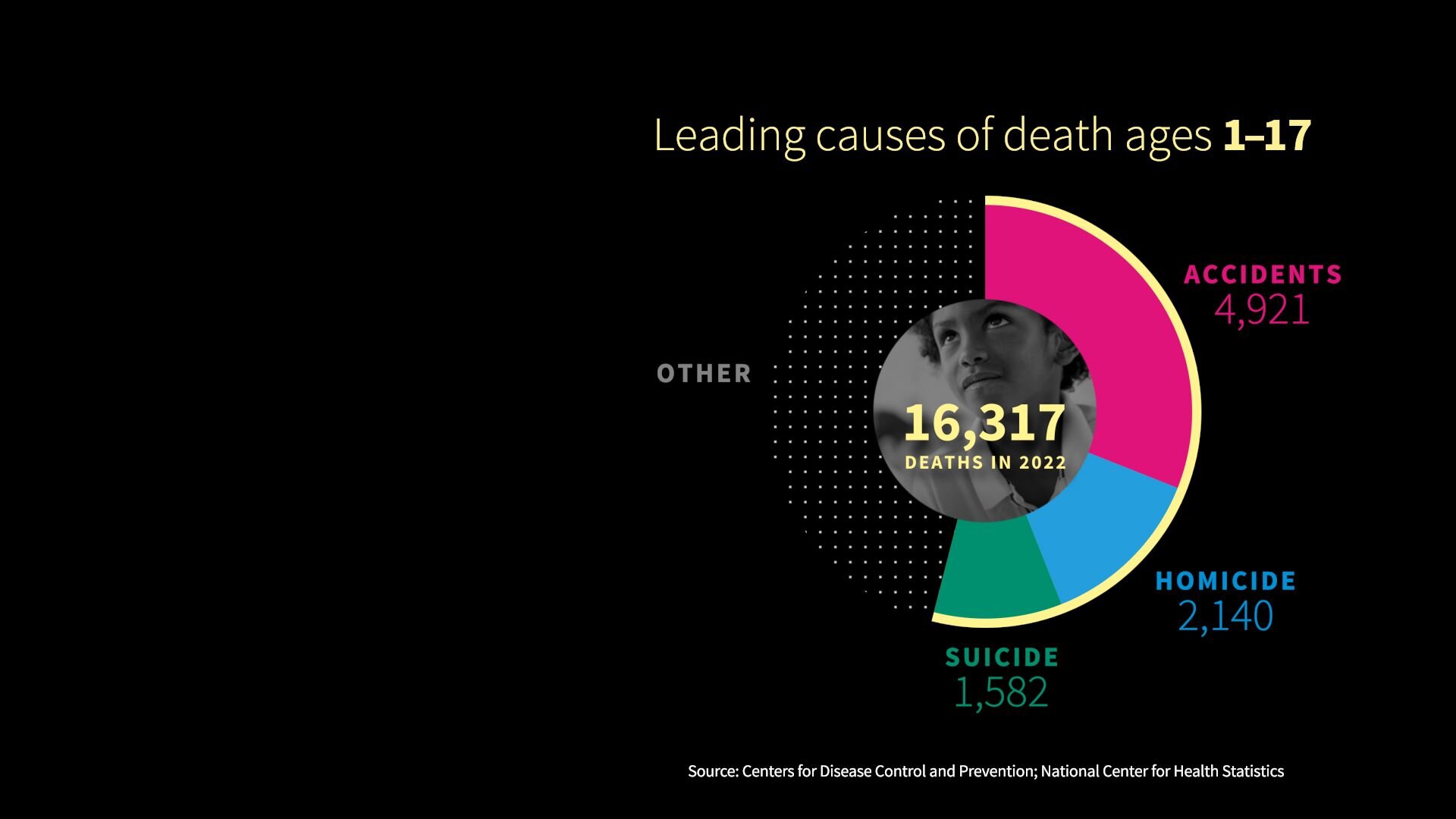
Out of 120.5 million people ages 18 to 44, 215,283 died, 83,000 of those were from accidents, including accidental drug overdoses. 22,000 by suicide, 17,000 from heart disease, and 16,000 by homicide.
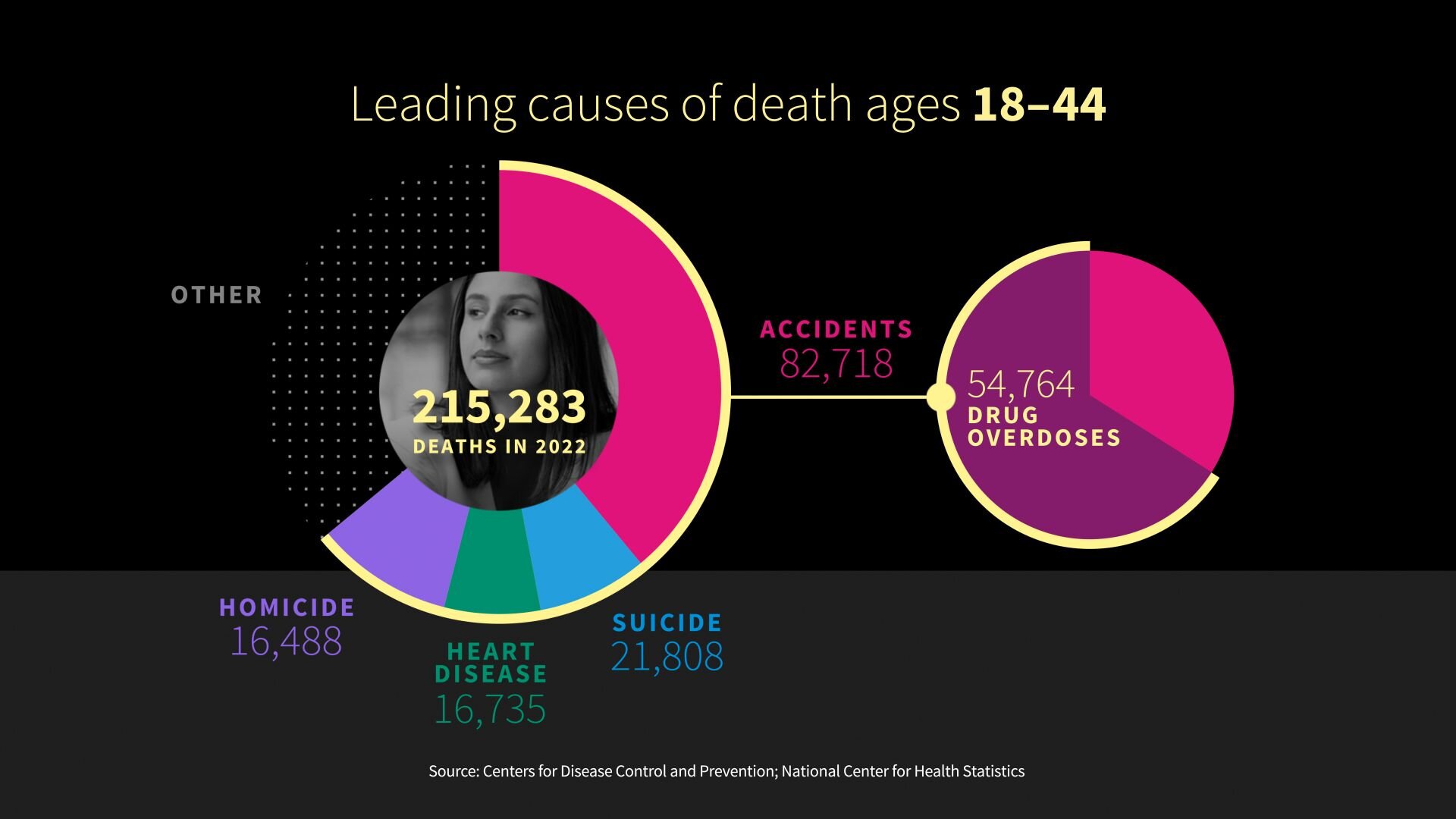
Of roughly 82.5 million people ages 45 to 64, just over 600,000 people died. Around 138,000 people died from cancer, 118,000 from heart disease, 65,000 from accidents, and 34,000 from Covid.
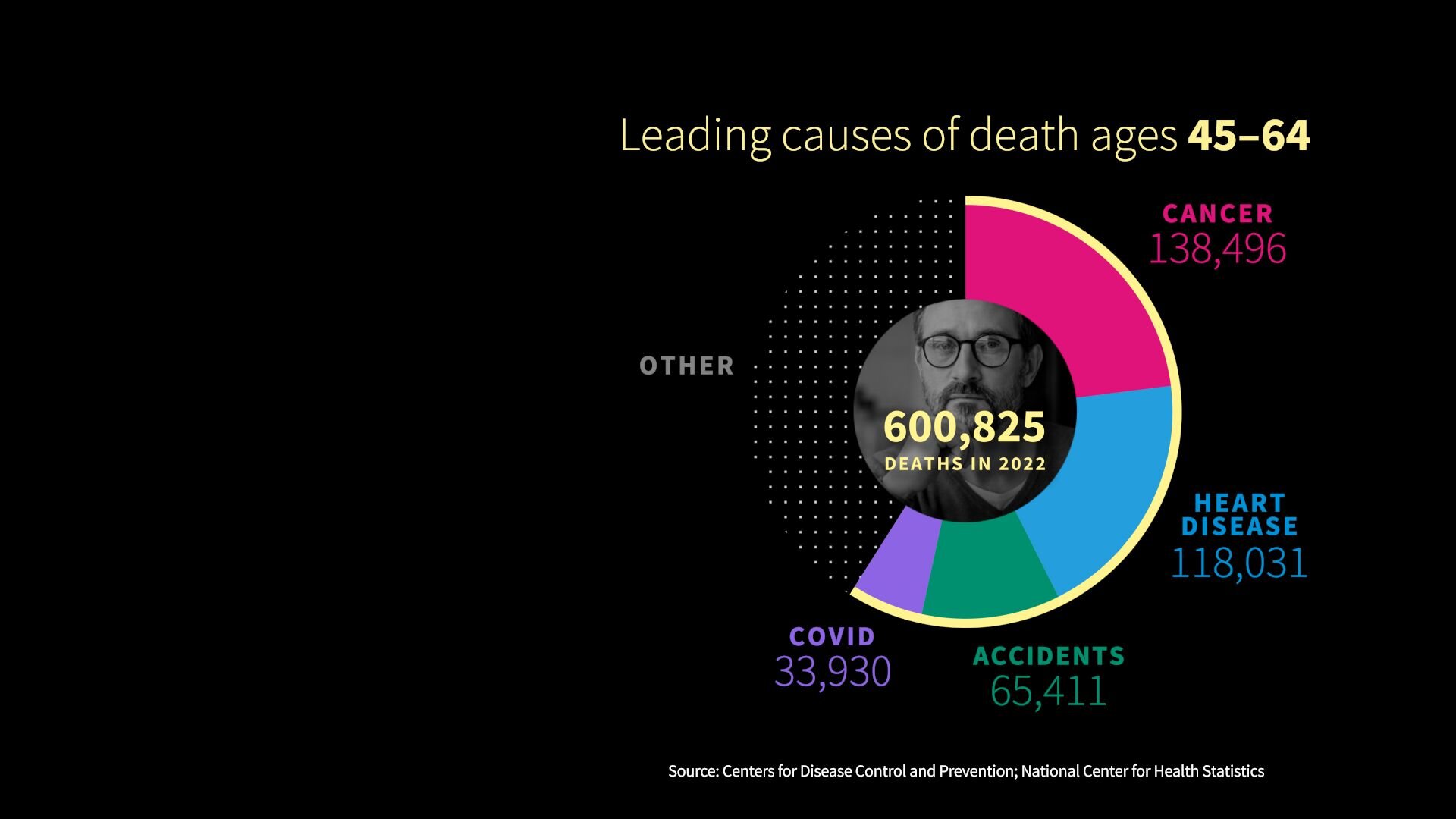
Among the 51.3 million people ages 65 to 84, just under 1.5 million died, around 350,000 of those from cancer, 319,000 from heart disease and 93,000 from Covid.
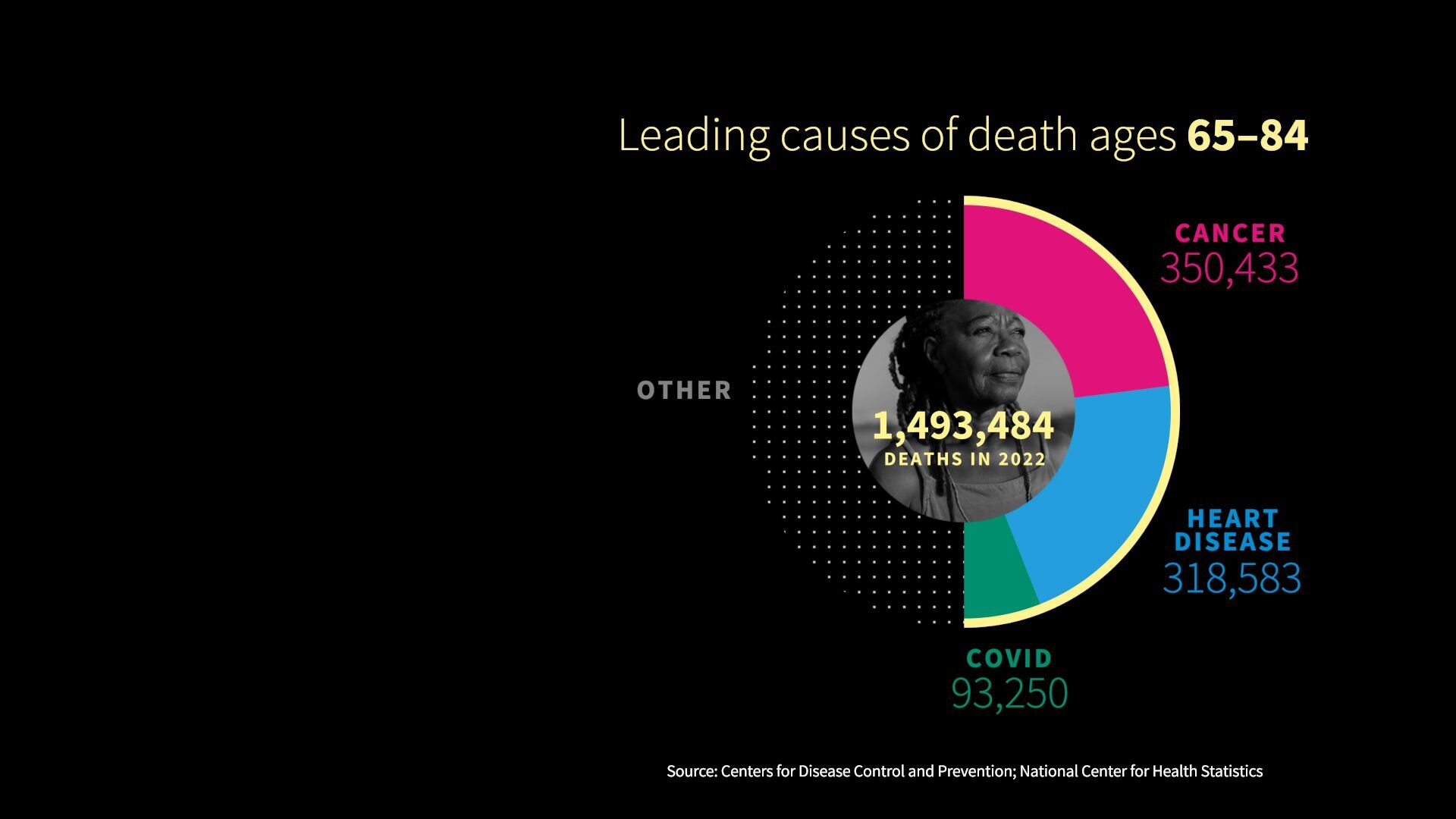
And out of nearly 6.5 million Americans over 85, 933,000 people died. Around 249,000 of those from heart disease, 102,000 from cancer and 73,000 from Alzheimer's.
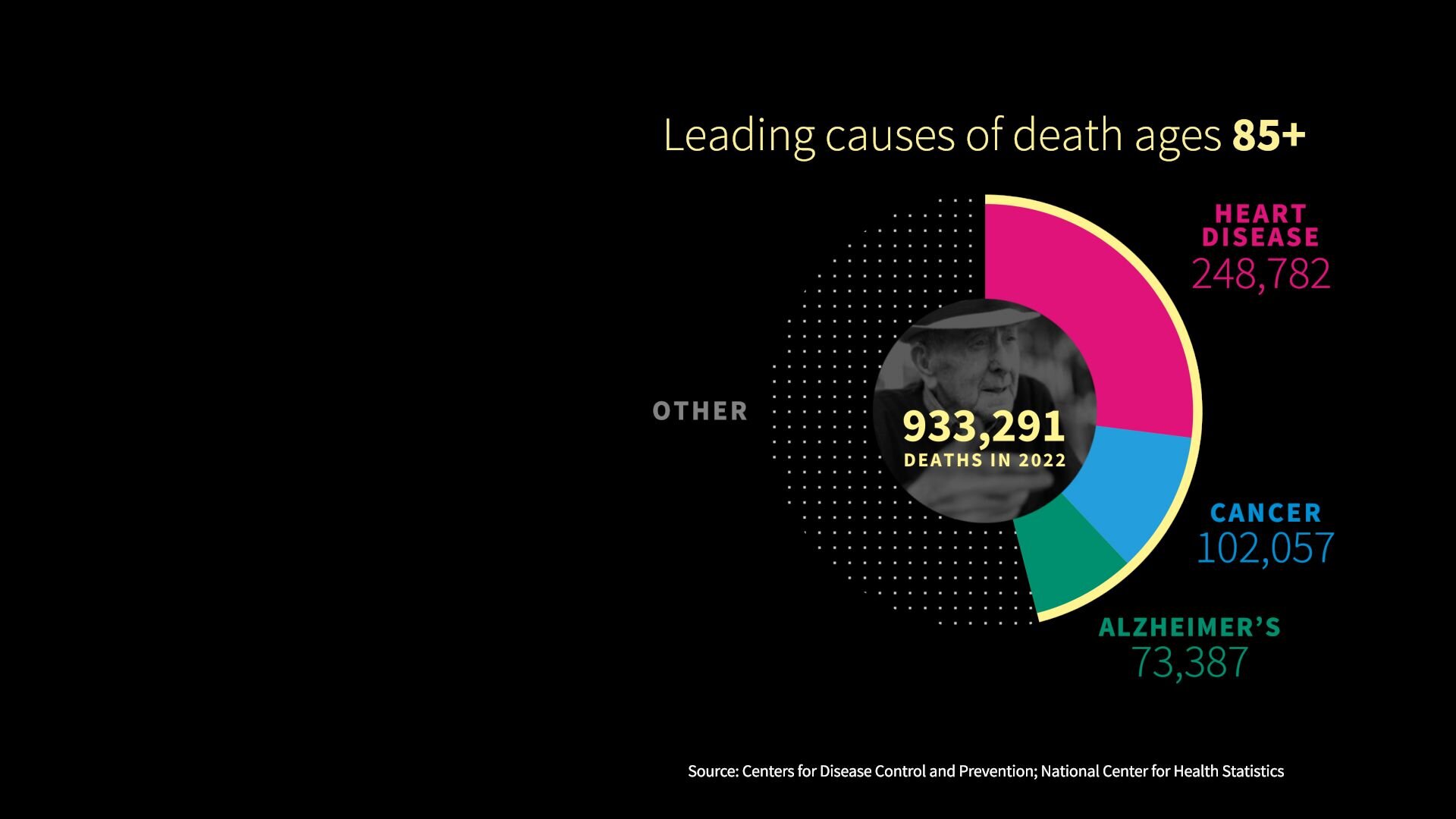
The conclusion from all of this is: accidents are the leading cause of death between age one and 44. Then cancer takes over at 45, with heart disease a close second, and finally at 85 plus heart disease is number one.
Let’s dig into the leading causes of death.
Covid emerged in 2020 and reached its peak in early January 2021 with almost 26,000 deaths per week.
But as of July 2024, it’s down to only 600 deaths per week.
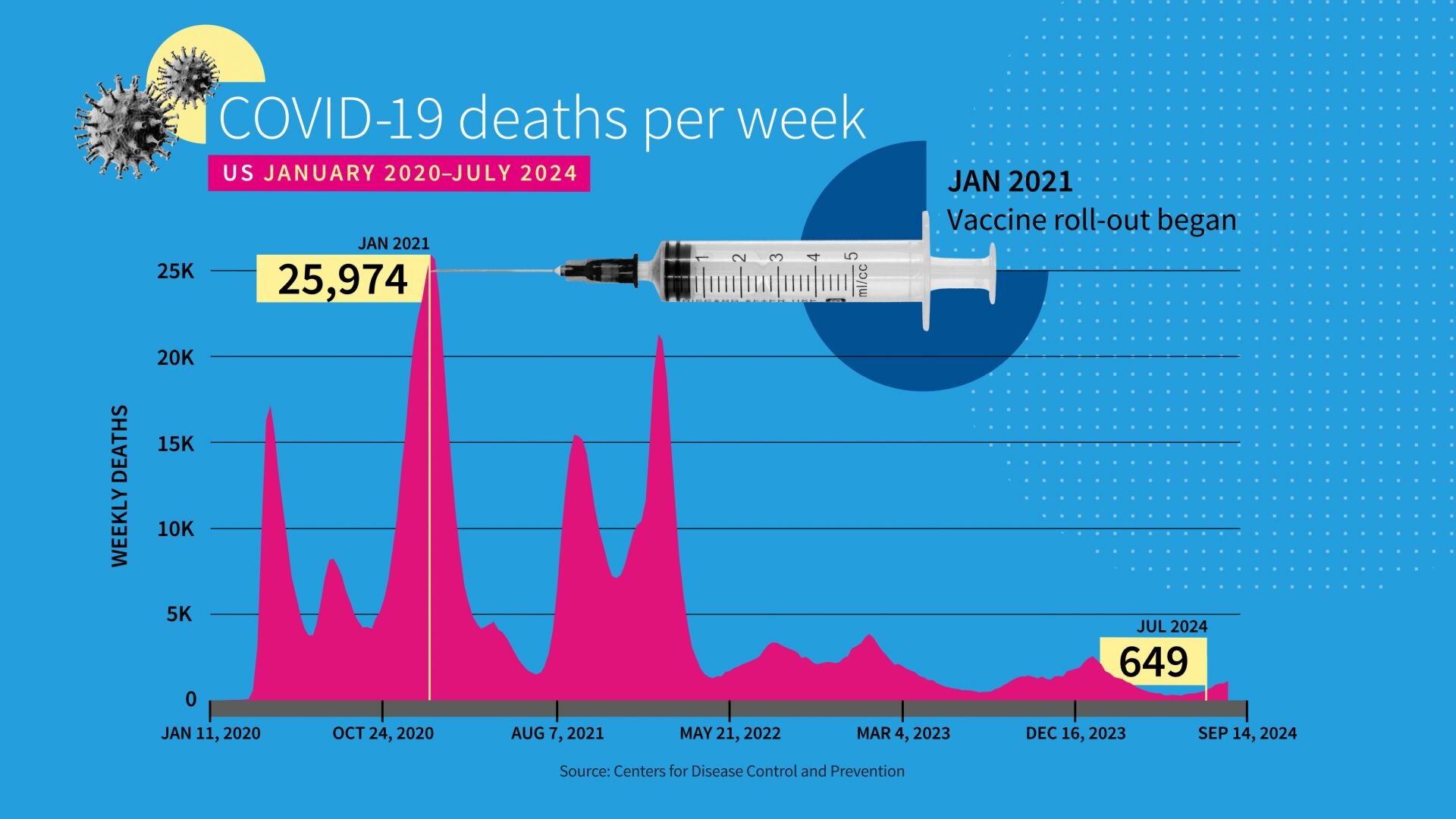
Now let’s look at accidental death. Unfortunately, they have been increasing over the last decade totaling over 227,000 in 2022 and accounting for 7% of total deaths.
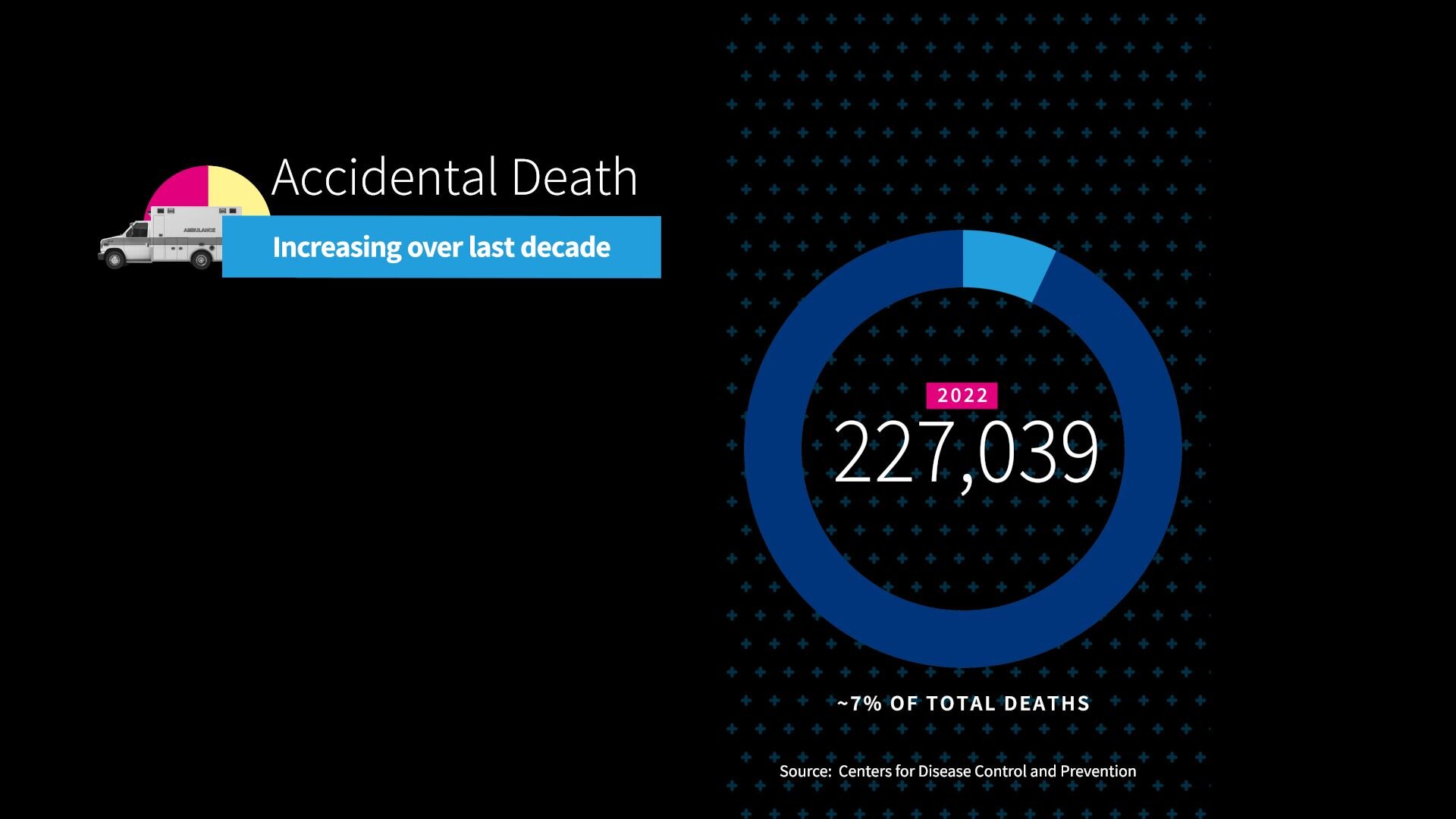
Accidental poisonings, which include drug overdoses, represent 45% of all accidental deaths.
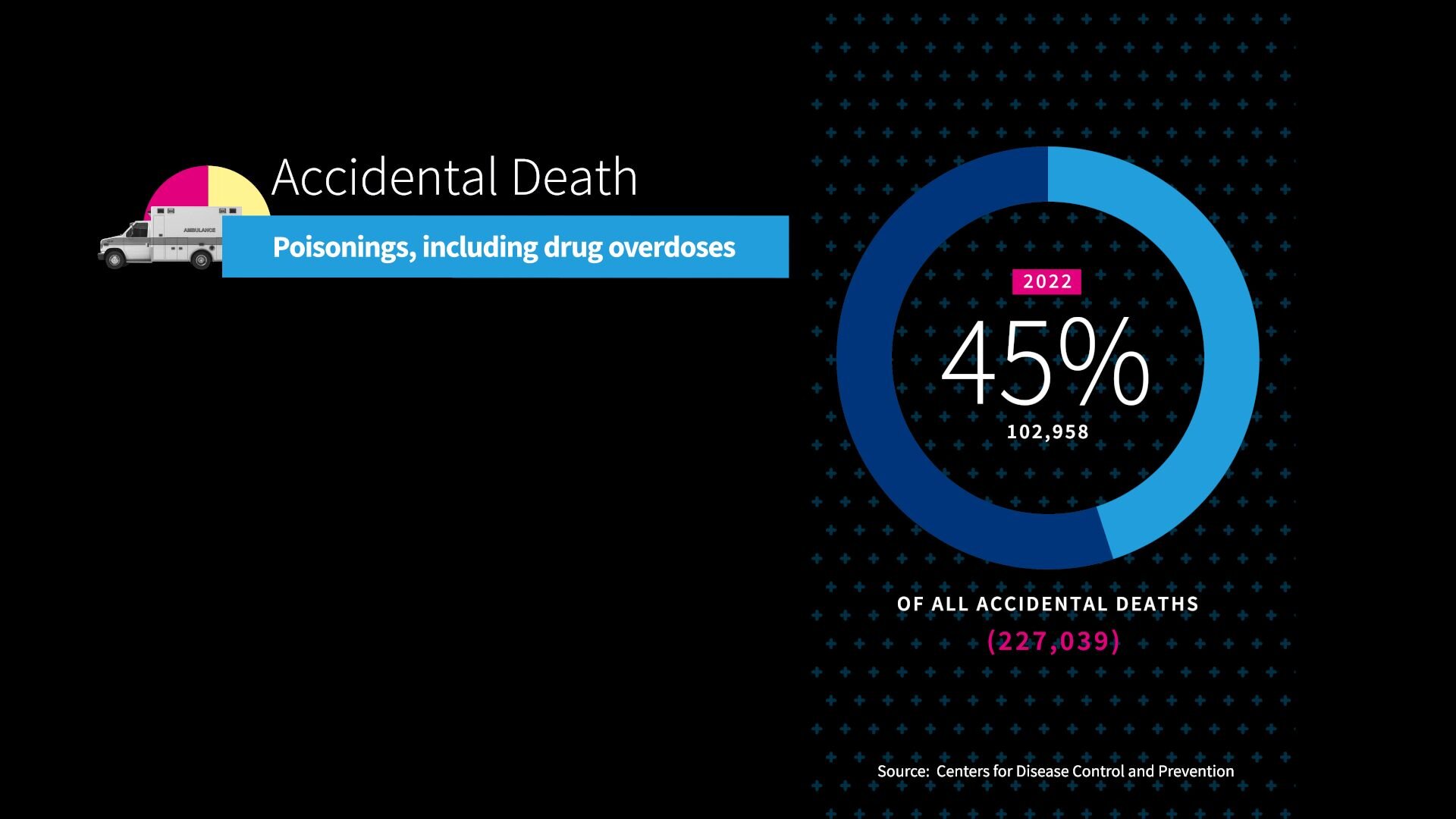
The leading causes of overdoses are fentanyl and meth, with fentanyl overdoses alone growing from just over 3,000 in 2010 to over 74,000 in 2022.
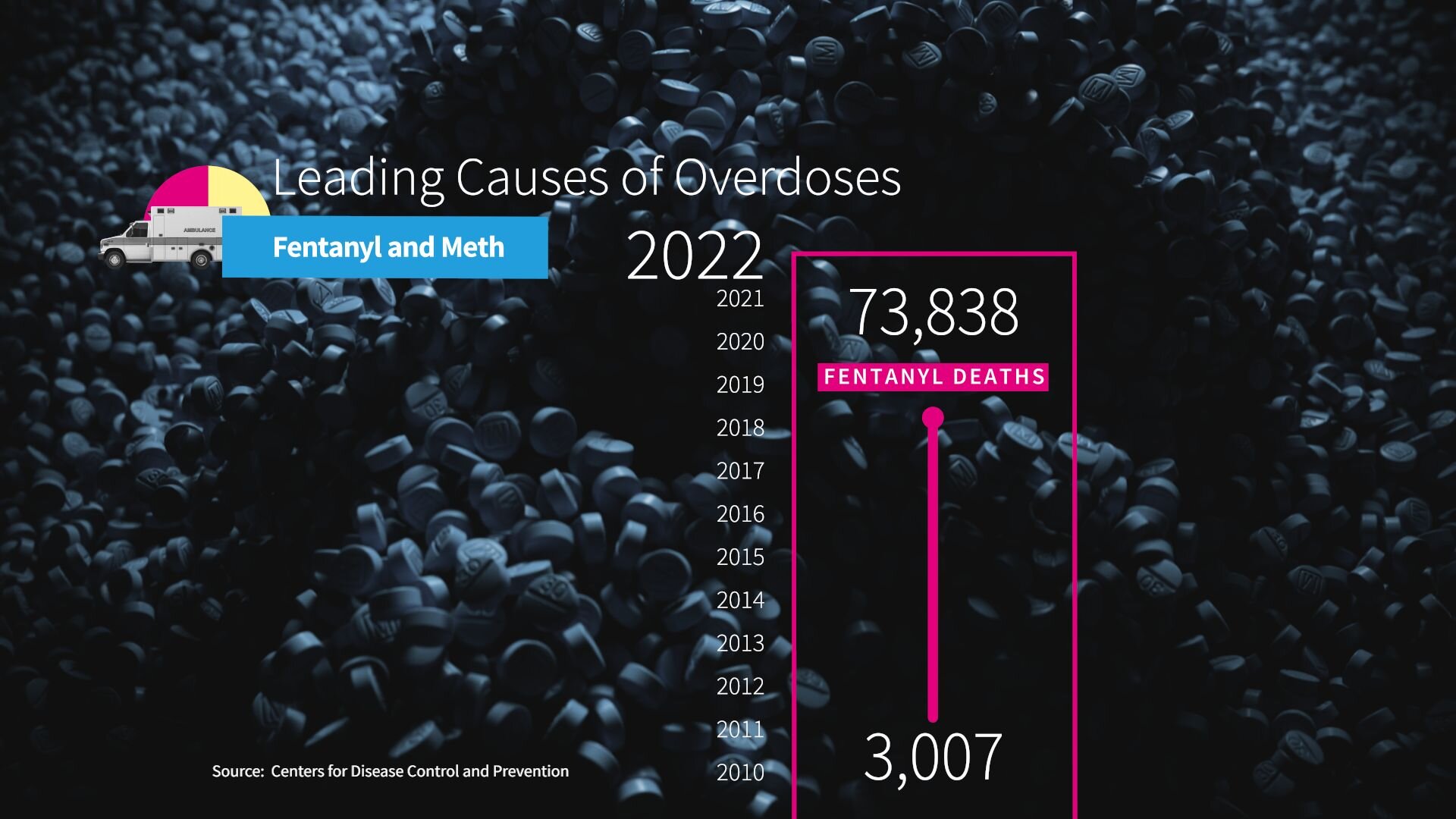
One category of accidental death has improved with time.
In 1970, there were over 52,000 vehicle deaths.
And even though the US population has grown by 130 million people since then, and the number of miles driven has nearly tripled from about 1.1 trillion miles to 3.2 trillion, vehicle deaths actually dropped to just over 42,000 in 2022.
Overall, Americans are living longer, which brings us to Alzheimer’s. As of 2023, 6.7 million Americans over age 65 had been diagnosed with it.
We also hear a lot about firearm-related deaths.
And there were 48,000 of them in 2022 including gun accidents.
55% of suicides were committed by gun and 79% of homicides were by gun.
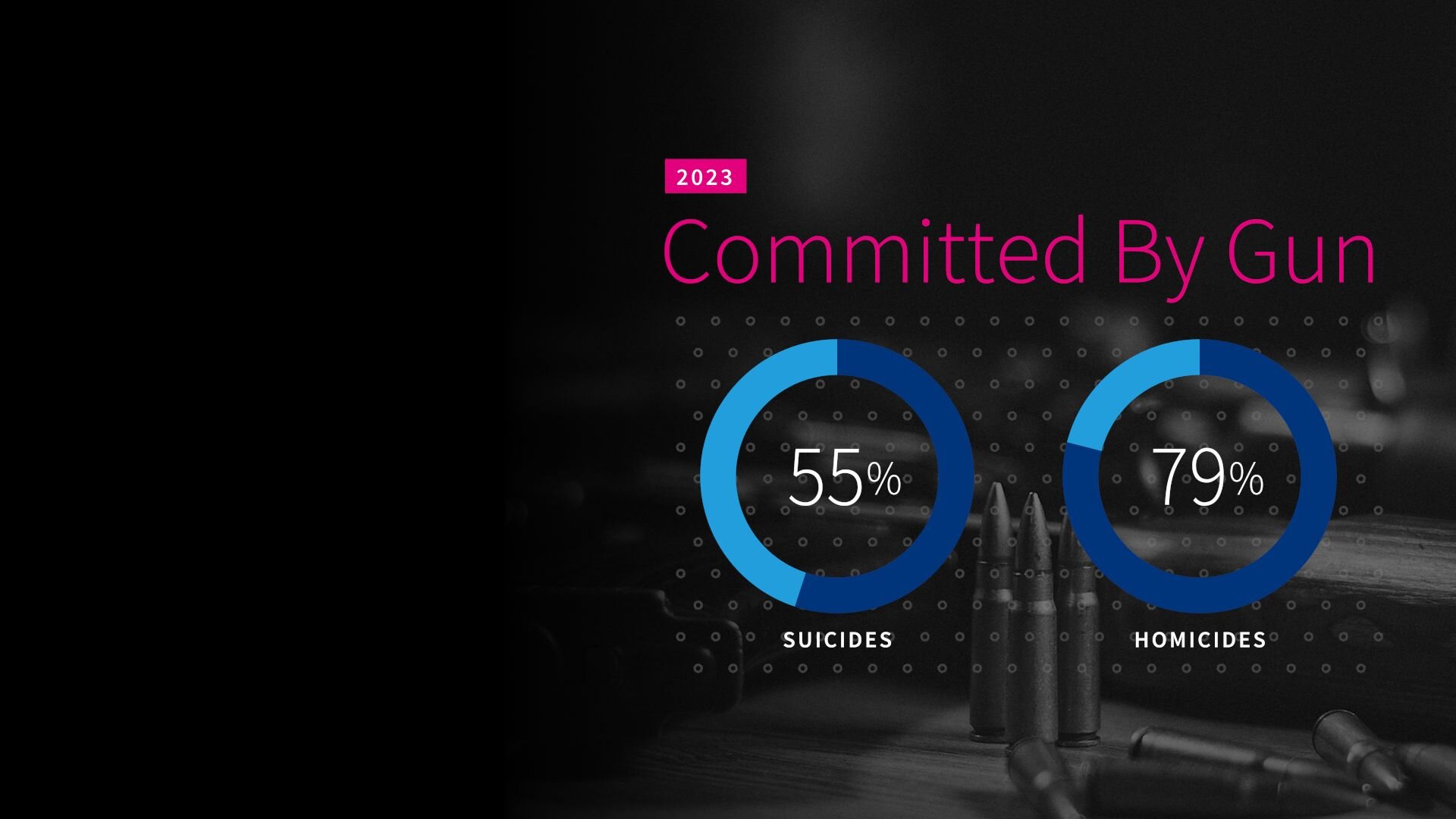
What about active shooter incidents, defined by the FBI as one or more individuals actively engaged in killing or attempting to kill people in a populated area? This includes mass shootings, and account for just 100 of the total 48,000 gun deaths in 2022.
Firearm deaths accounted for 1.2% of all deaths in 1999 and grew to 1.5% in 2022.
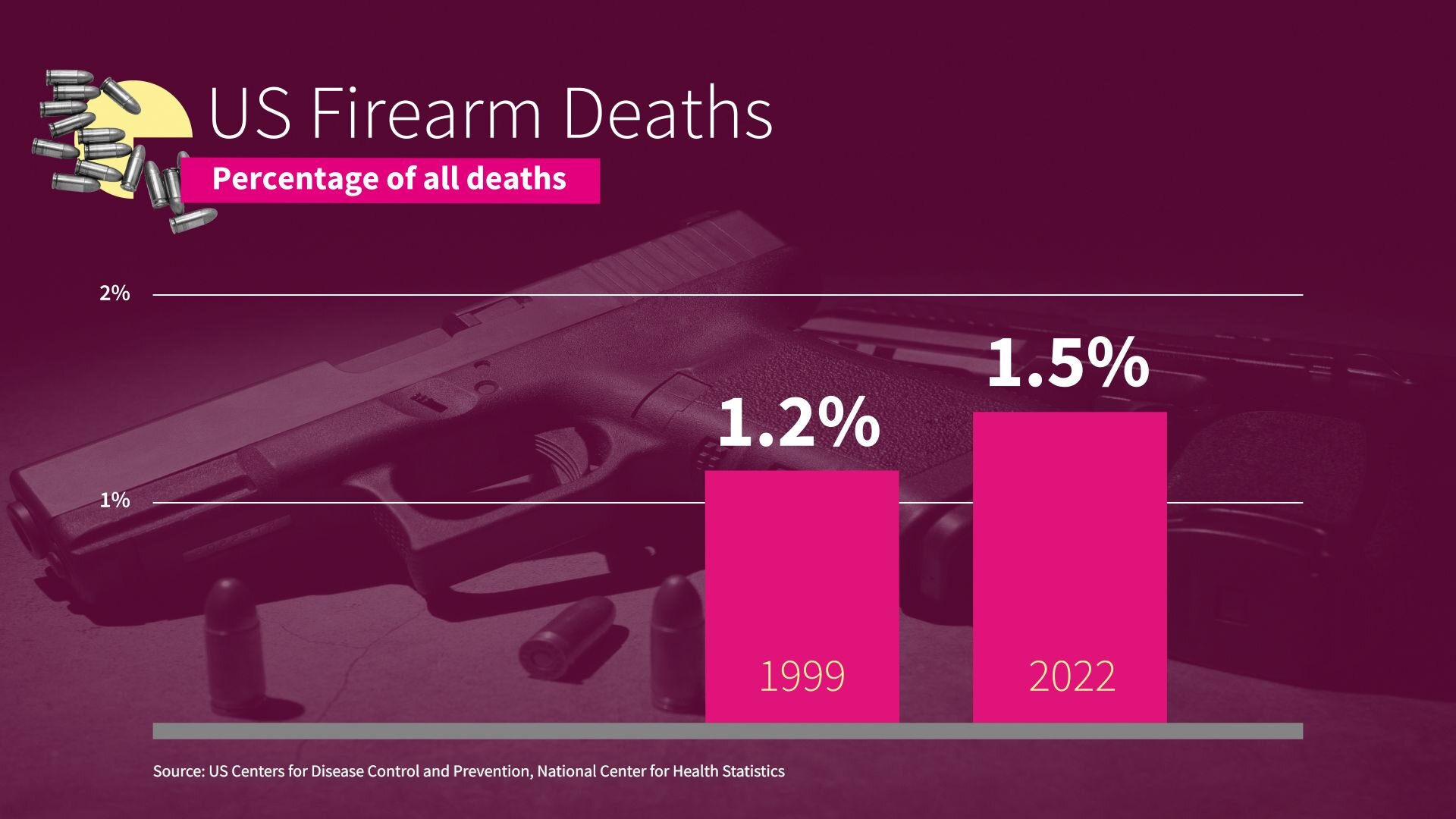
Let’s shift gears. Let’s look at key health risk factors: smoking, drinking, obesity.
First, smoking, which causes strokes, heart disease, and lung cancer.
In fact, it’s connected with about 90% of all lung cancer deaths. The most common cancer type and accounted for about 130,000 deaths in 2022.
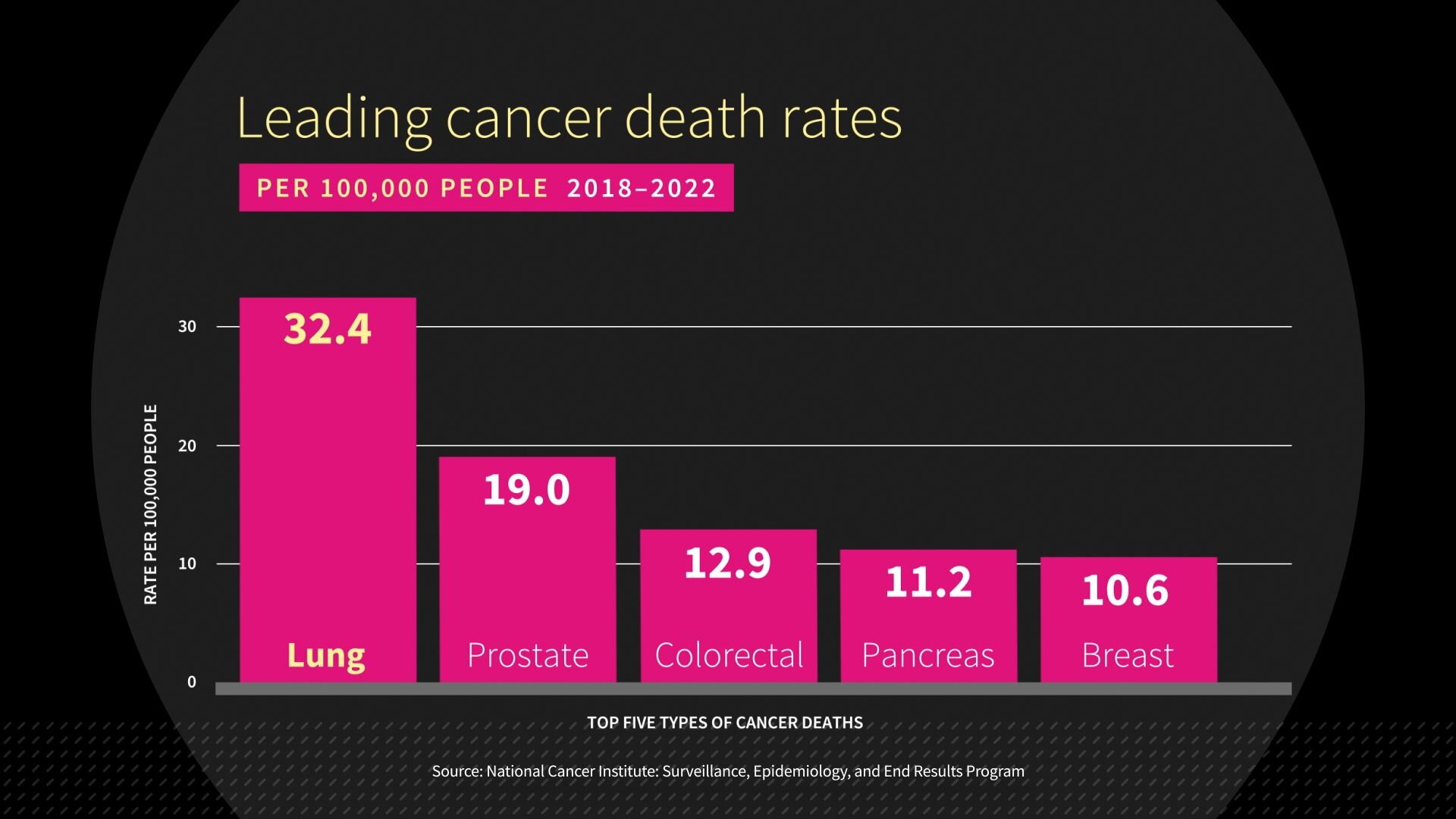
Fortunately, the share of adult smoking tobacco keeps declining, falling below 14% in 2022.
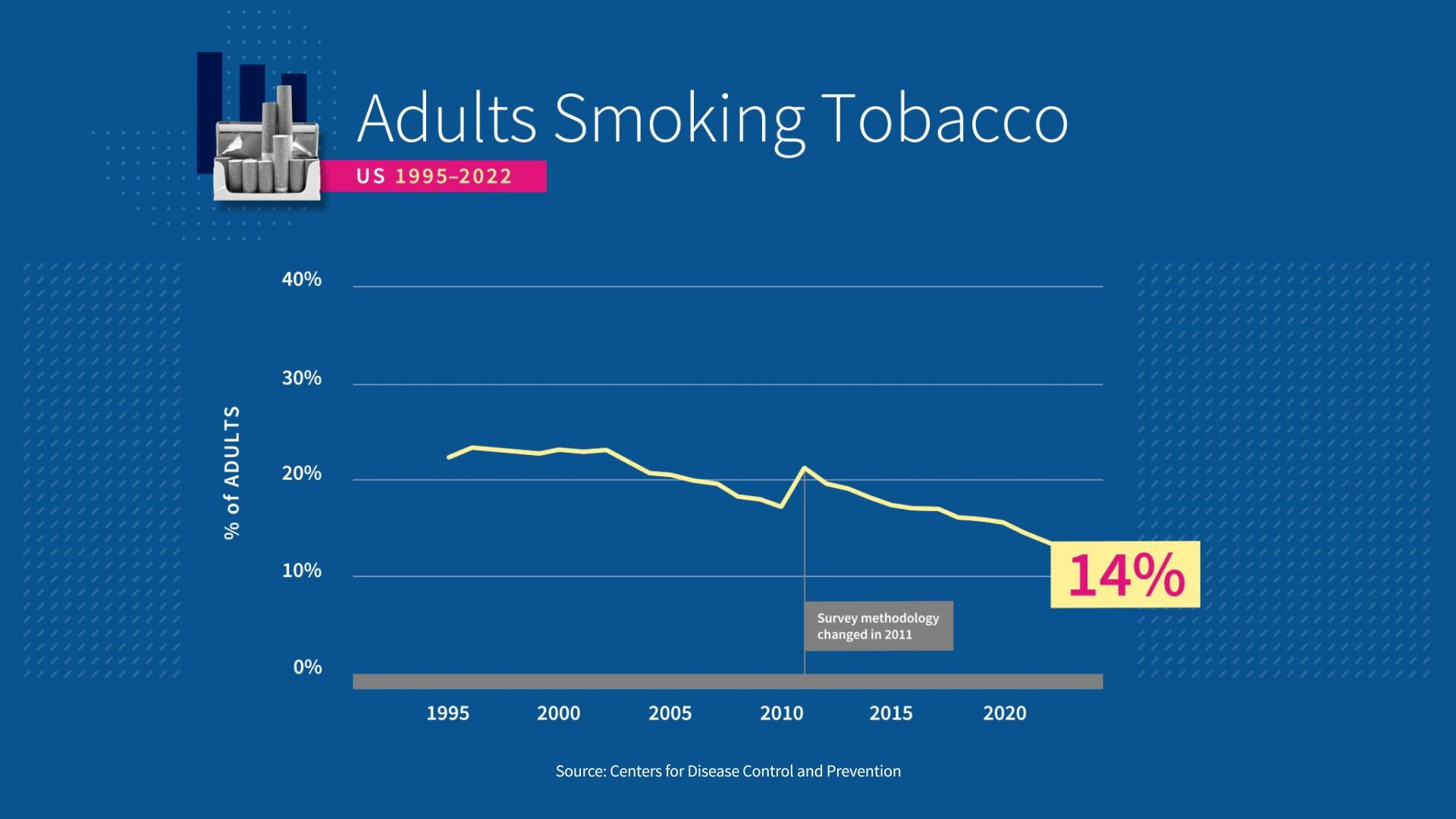
Next up, drinking.
Alcohol misuse, including repeated episodes of binge drinking, contributes to liver disease as well as an increased risk of head, neck, esophageal, liver, breast, and colorectal cancers.
In 2022, the government characterized almost 17% of adults as binge drinkers.
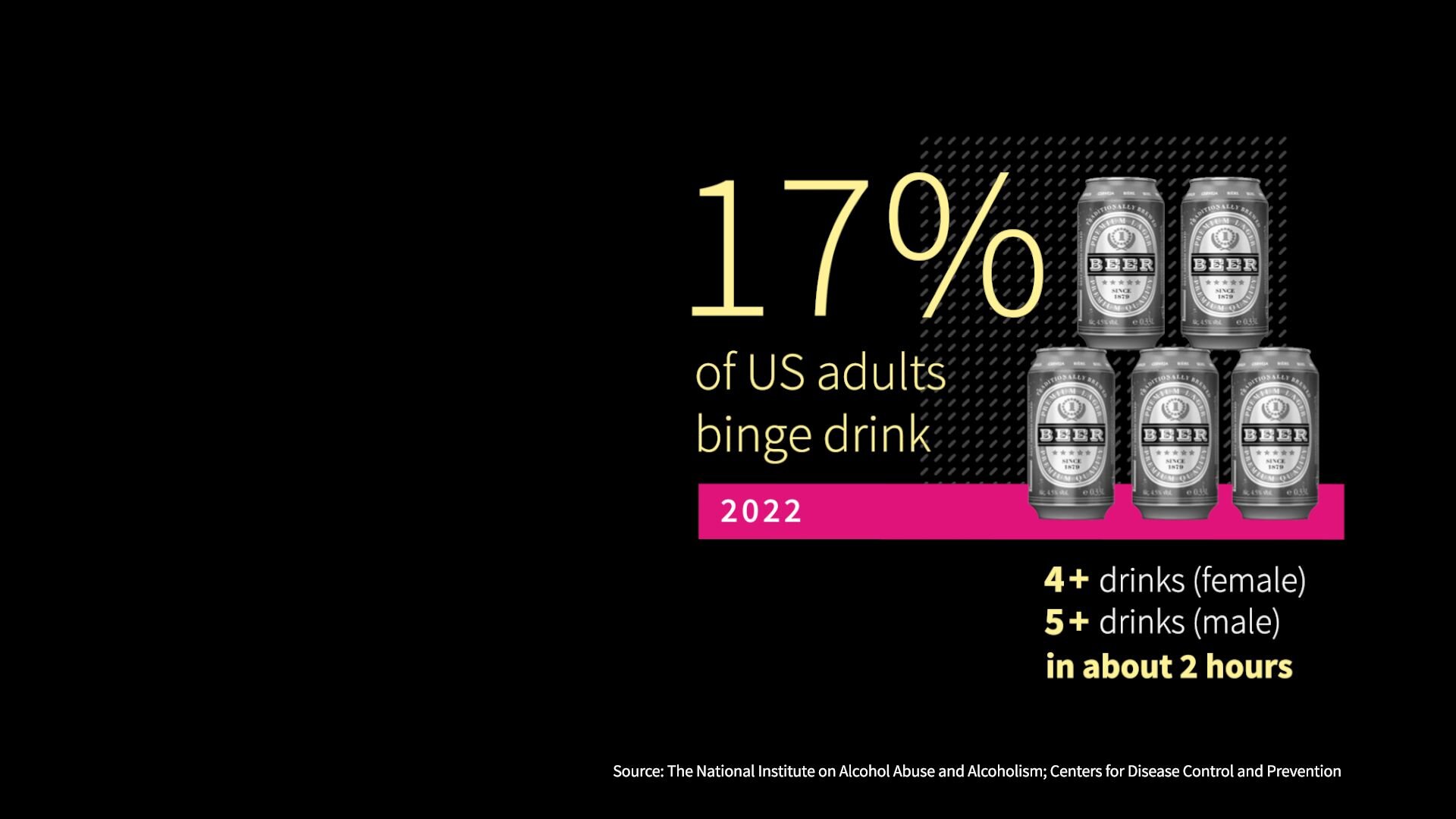
The next risk factor is obesity, which can contribute to higher rates of cancer, heart disease, and diabetes.
Obesity is defined for an adult as having a body mass index of 30 or higher.
Take me, for example. I'm five feet 11 and weigh 210 pounds, and my body mass index is 29.3.
Unfortunately, obesity among American adults increased from 15.8% in 1995 to 33.6%. Wow.
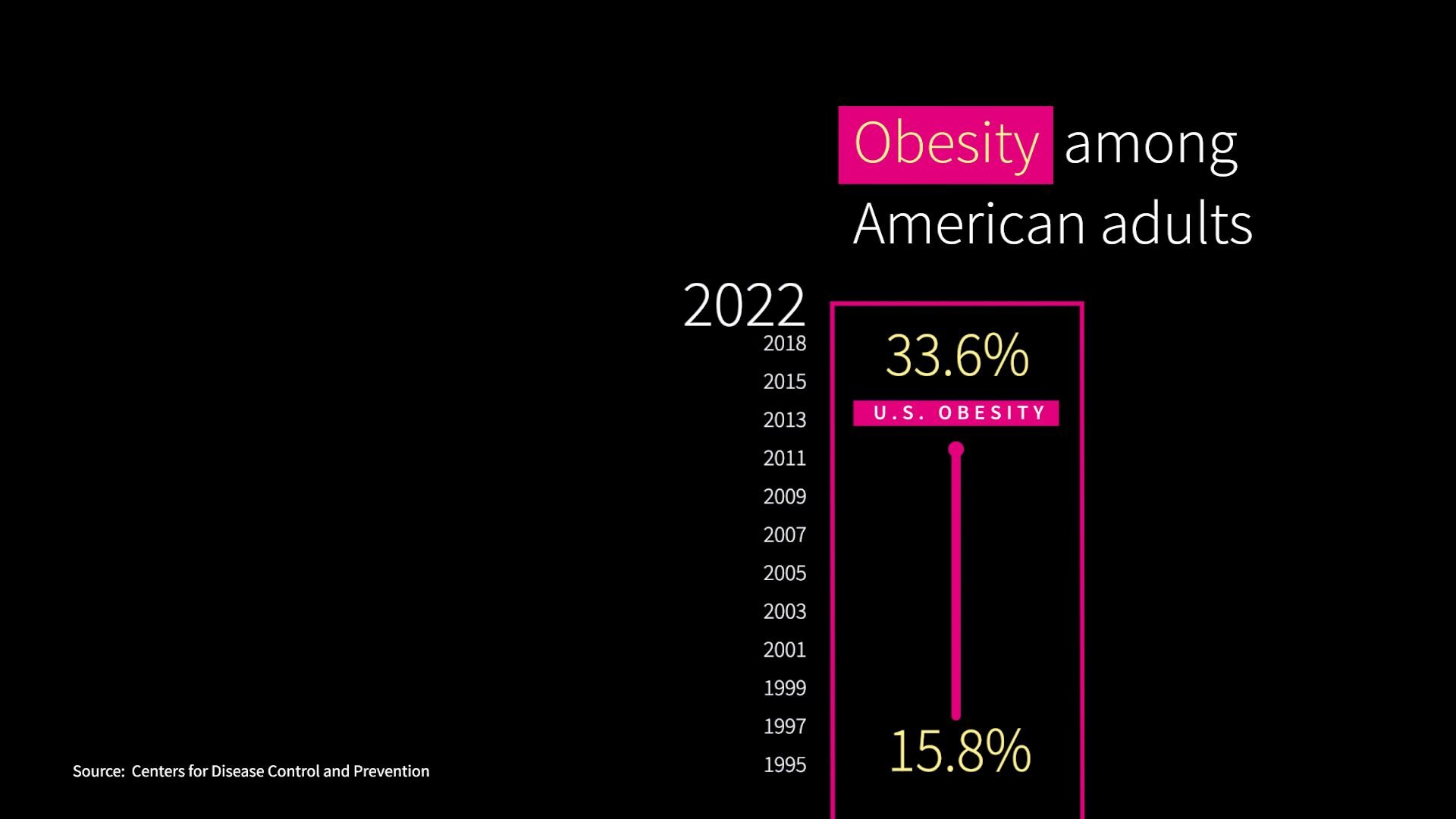
How common is mental illness? Around 34% of young adults ages 18 to 25 had a mental illness.
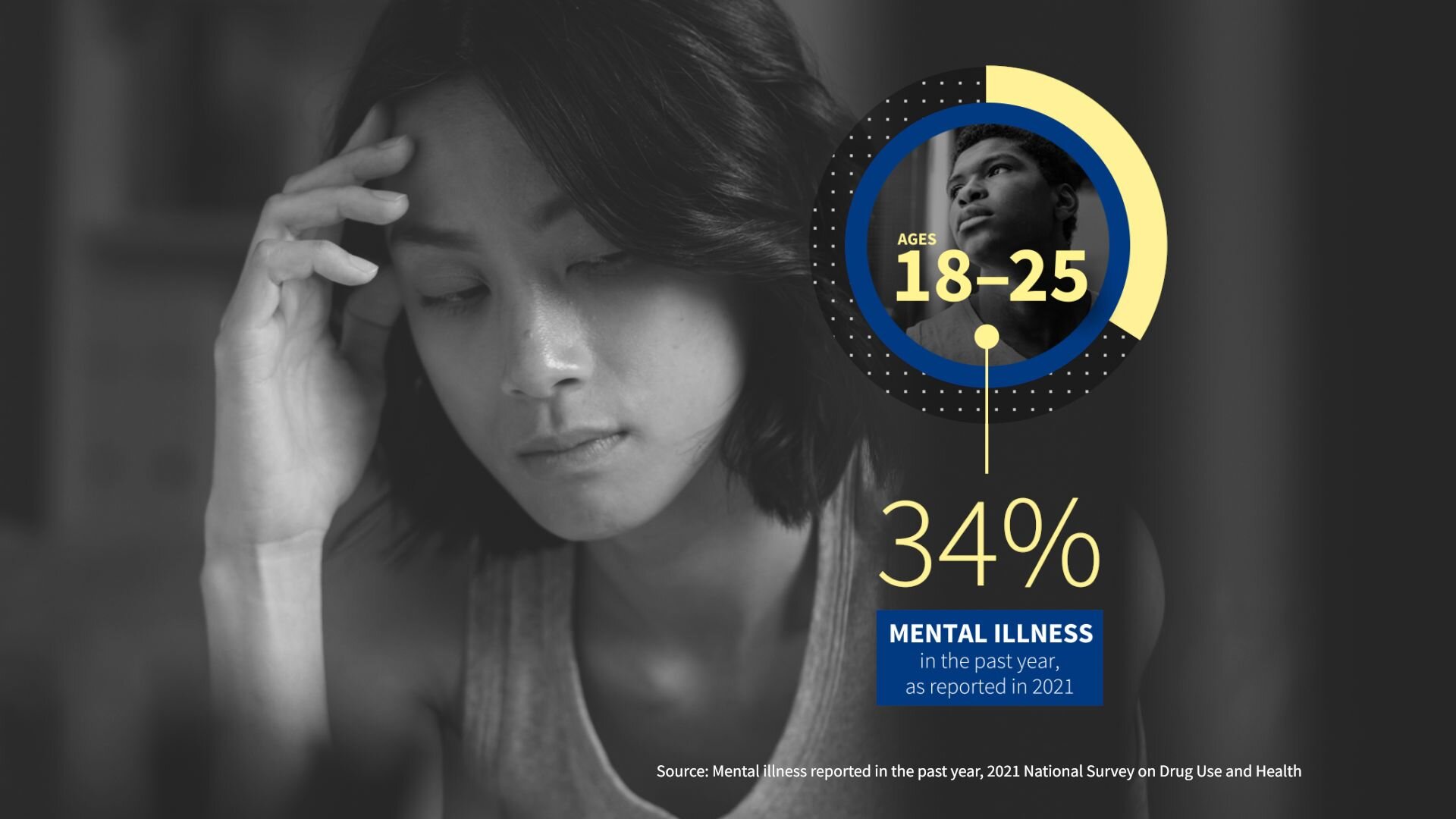
For adults ages 26 to 49, it was 28%.
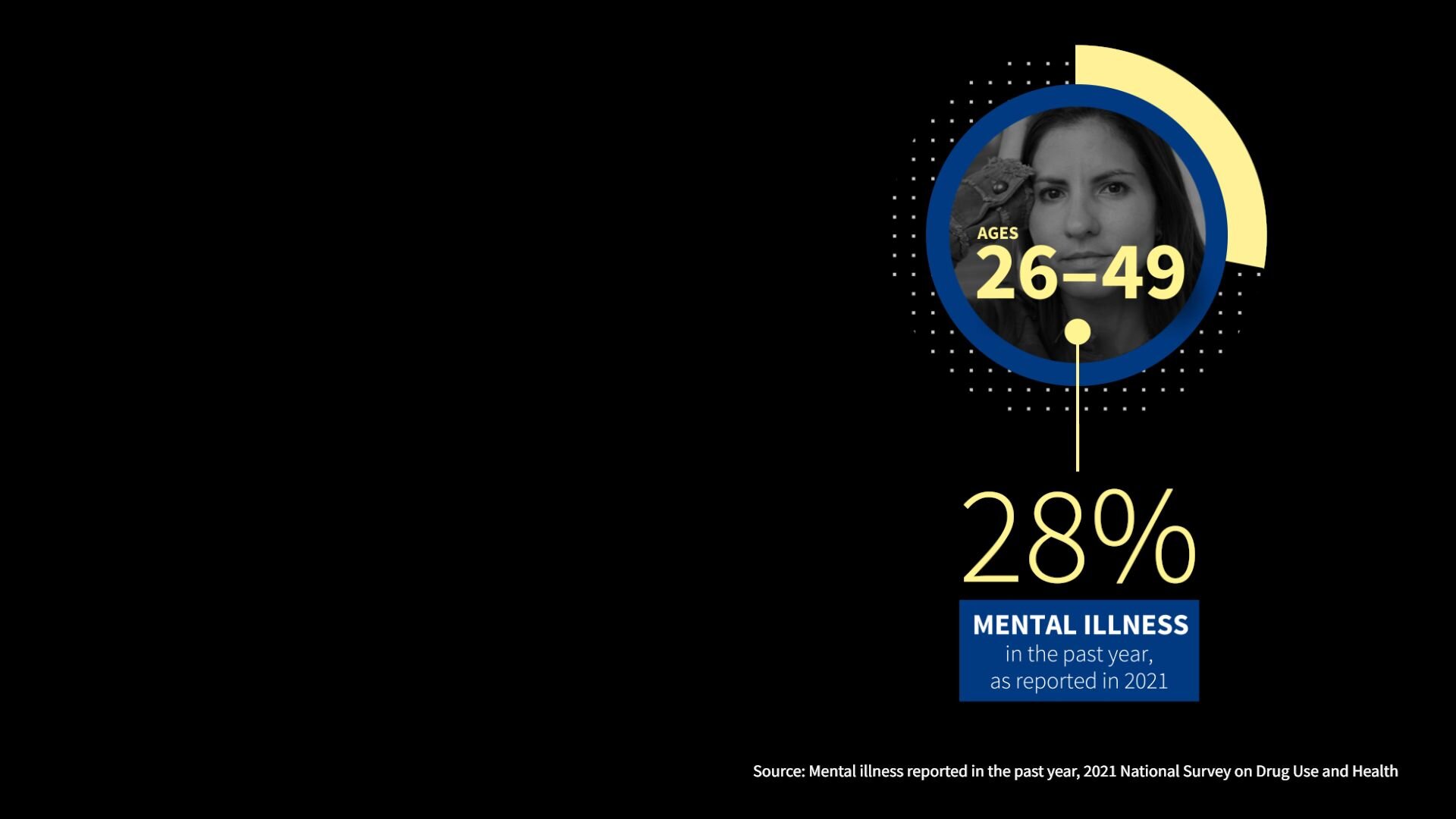
And for adults 50 or older, 15%.
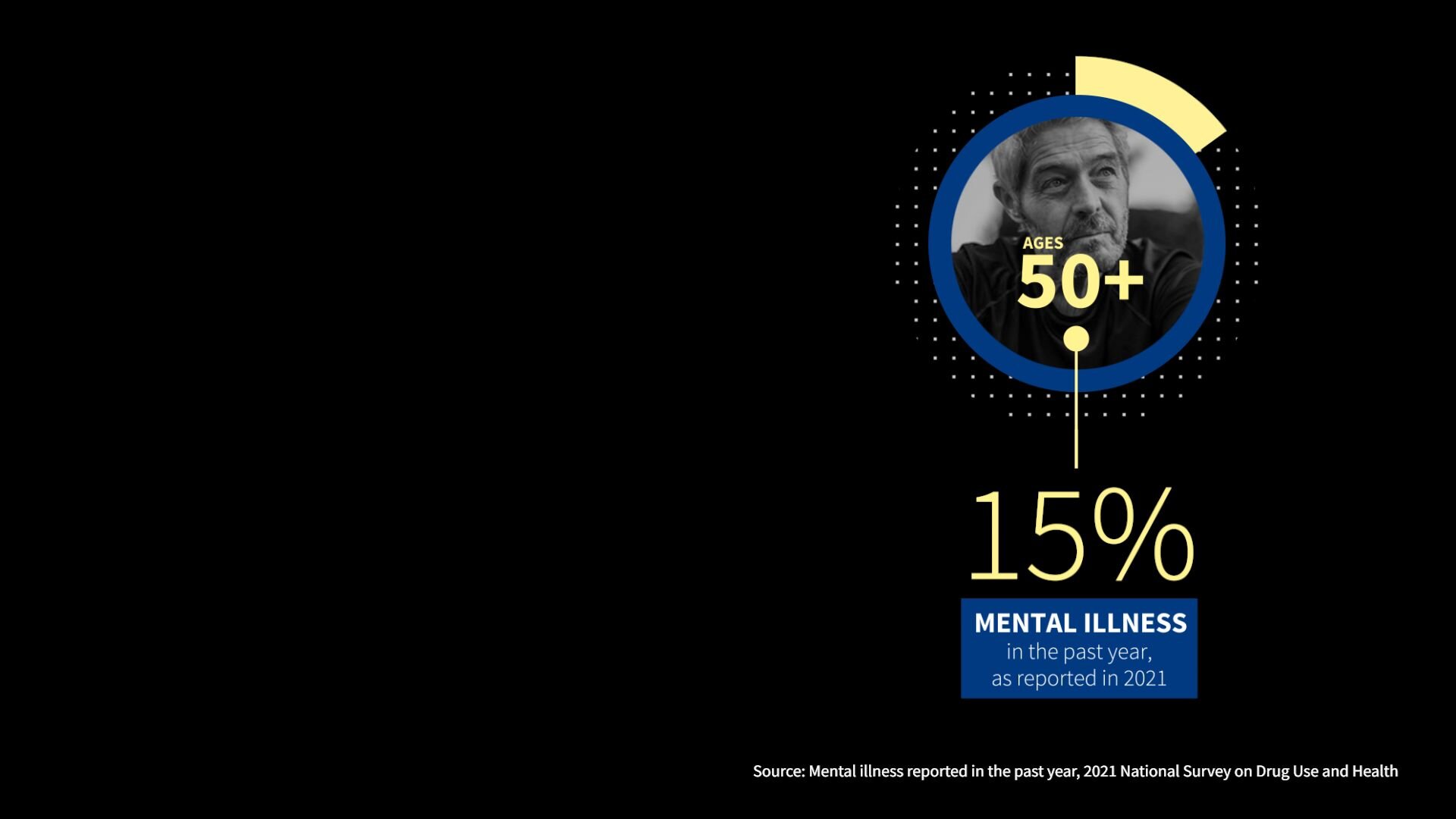
Now let’s go through who’s insured and who isn’t.
Where does all the health care spending go? How much of it comes directly out of your pocket? And who picks up the rest of the tab?
About 92% of Americans, or 304 million people, had health insurance in 2022.
Private insurance covered over 216 million people, 66% of the total.
Public insurance covered 119 million people. That's 36% of the total.
It adds up to more than 304 million because people can be on more than one insurance plan at a time.
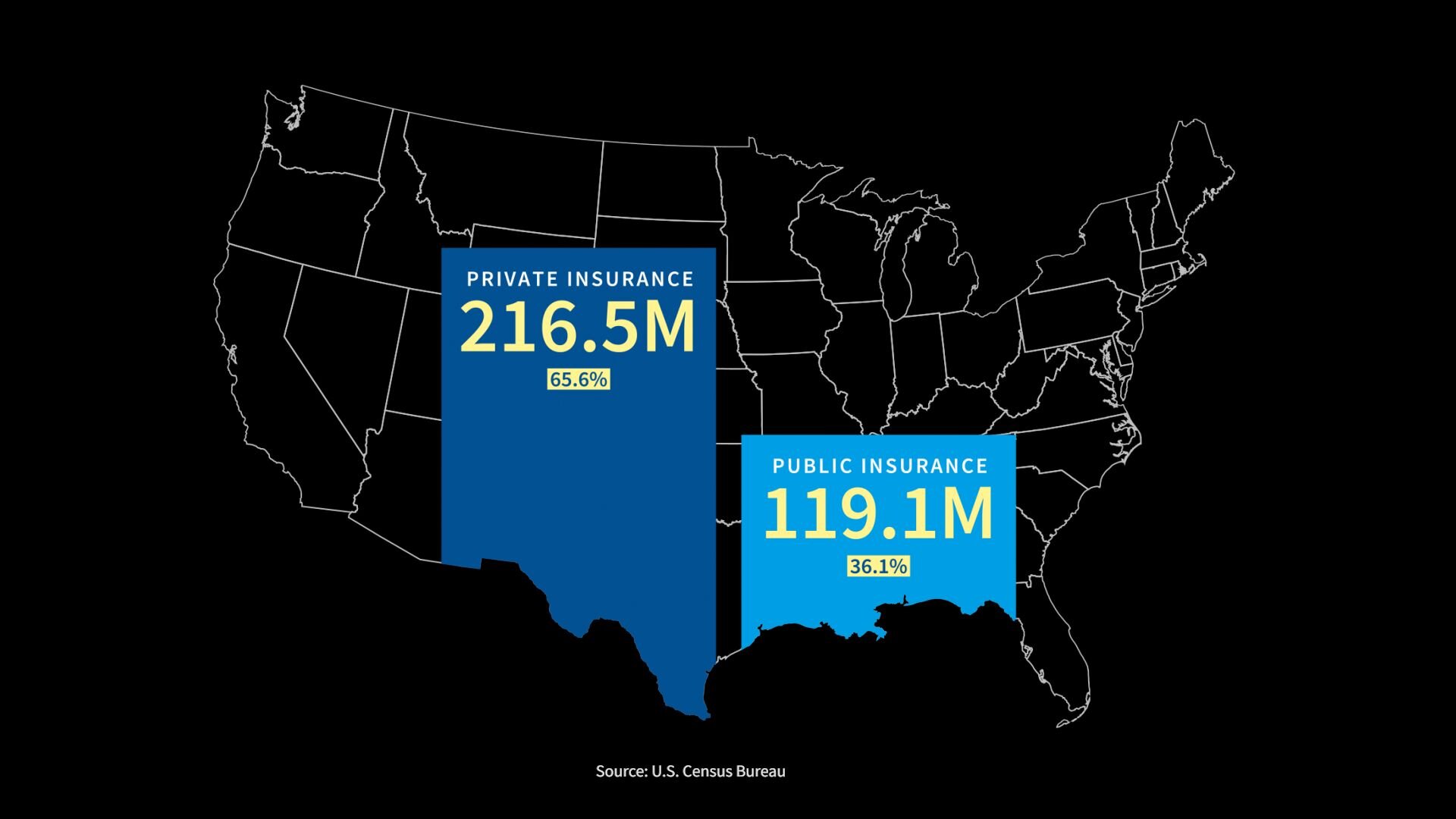
The uninsured rate dropped from 16% in 2010 to 8% in 2022.
2010 was the year the Affordable Care Act, also known as Obamacare, passed. But there could be many factors explaining the decrease in the uninsured rate.
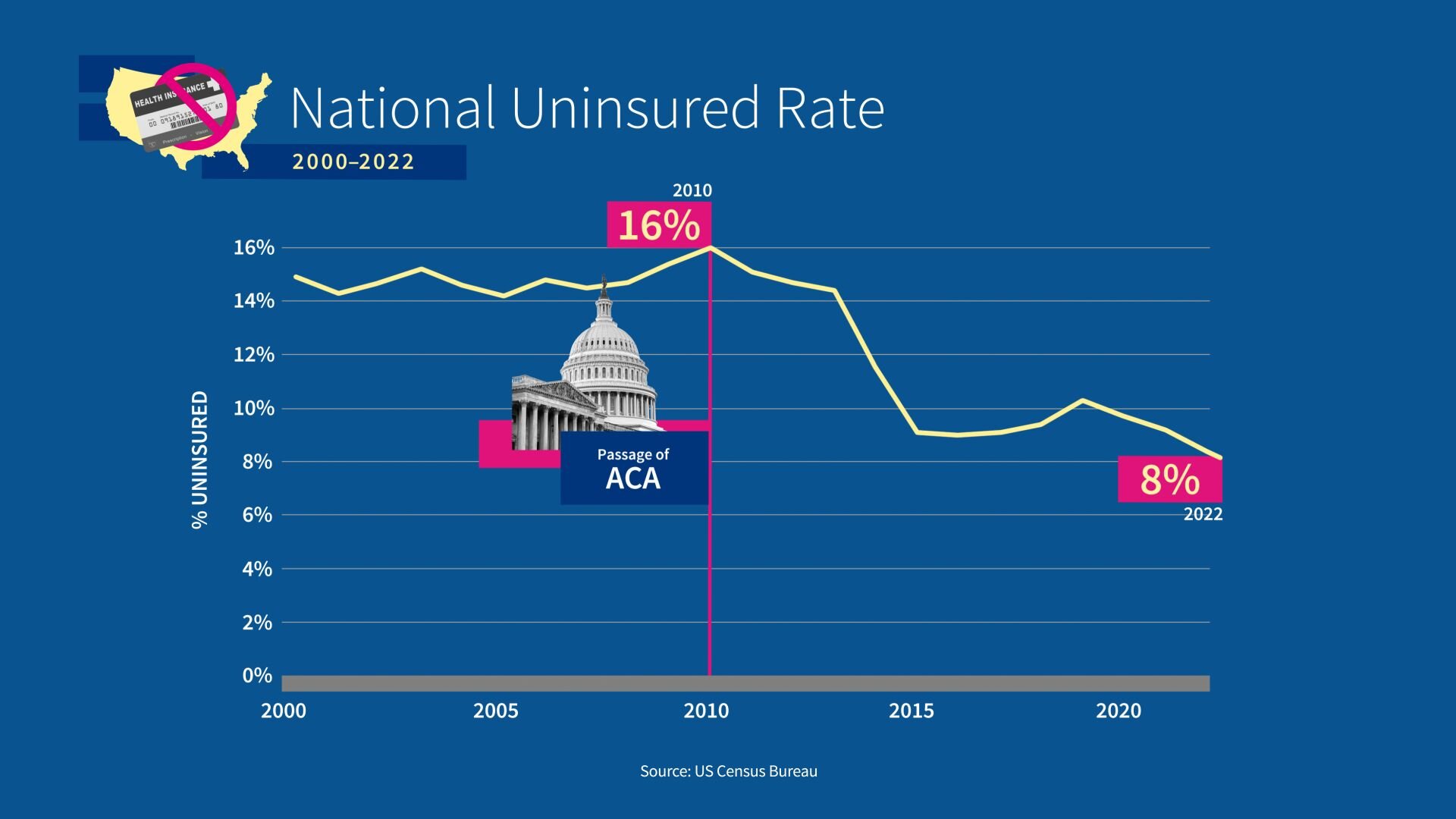
In total, this leaves about 26 million people with no health insurance.
Now let’s turn to health spending. That accounts for 17.3% of America’s gross domestic product, or $4.5 trillion.
On average, Medicare spends about $15,400 for every enrollee, Medicaid $9,200 per enrollee, private health insurance $6,600 per enrollee, and CHIP, which is a program for children, $3,400 per enrollee.
Of the $4.5 trillion in health spending, $3.7 trillion was spent on personal health care, while $760 billion was spent on things like public health, health research, health care facilities, medical equipment, and the cost of running health insurance programs.
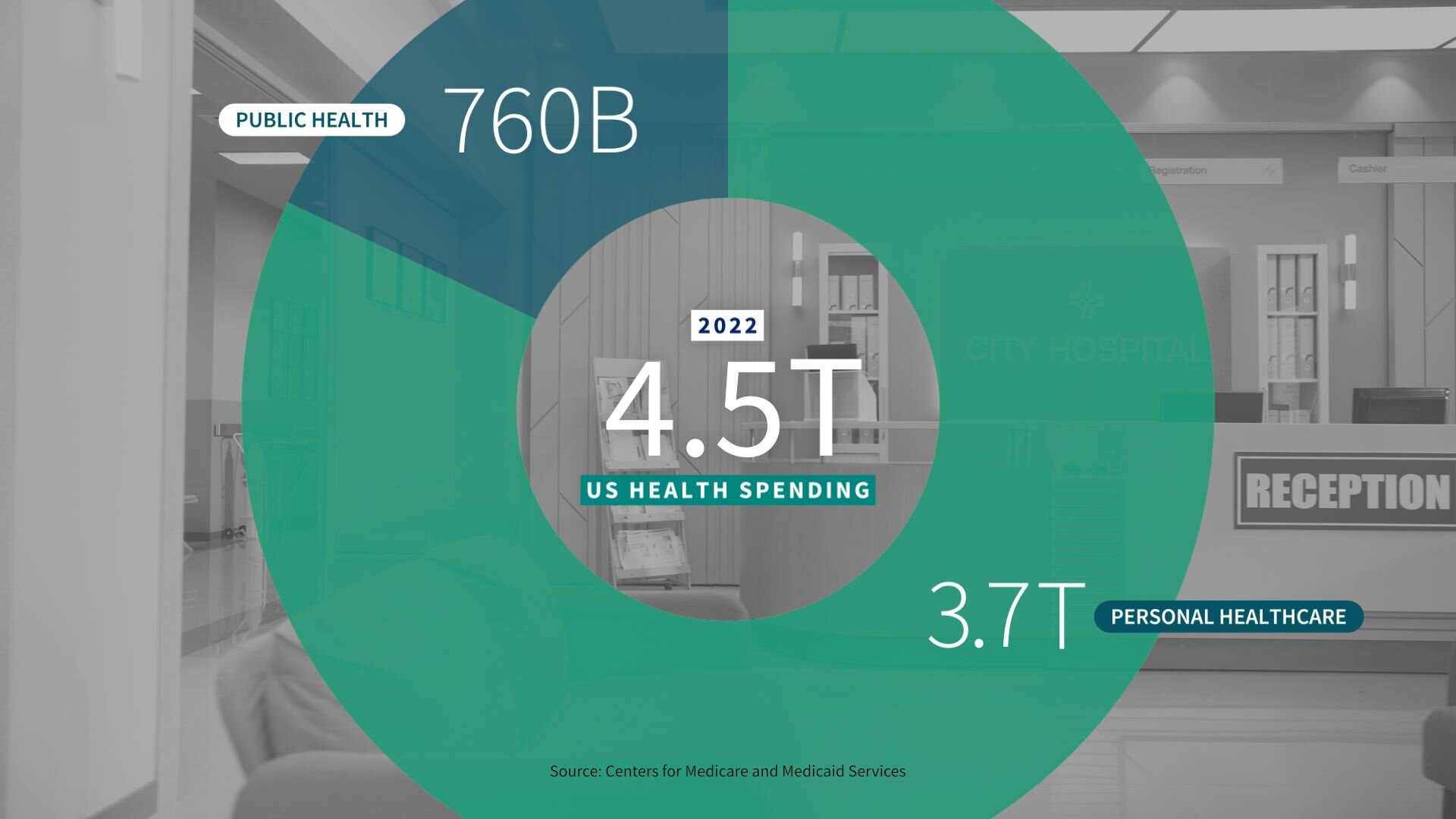
Private health insurance accounted for 31%, or $1.2 trillion, of all the personal healthcare spending in the United States, followed by Medicare at 24%, or $870 billion, and Medicaid at 19%, or $710 billion.
The last 13%, which is about $470 billion, was all paid by us out of our pockets. It includes our co-pays, deductibles, and stuff we buy at drugstores. It does not include monthly premiums, which we'll talk about later.
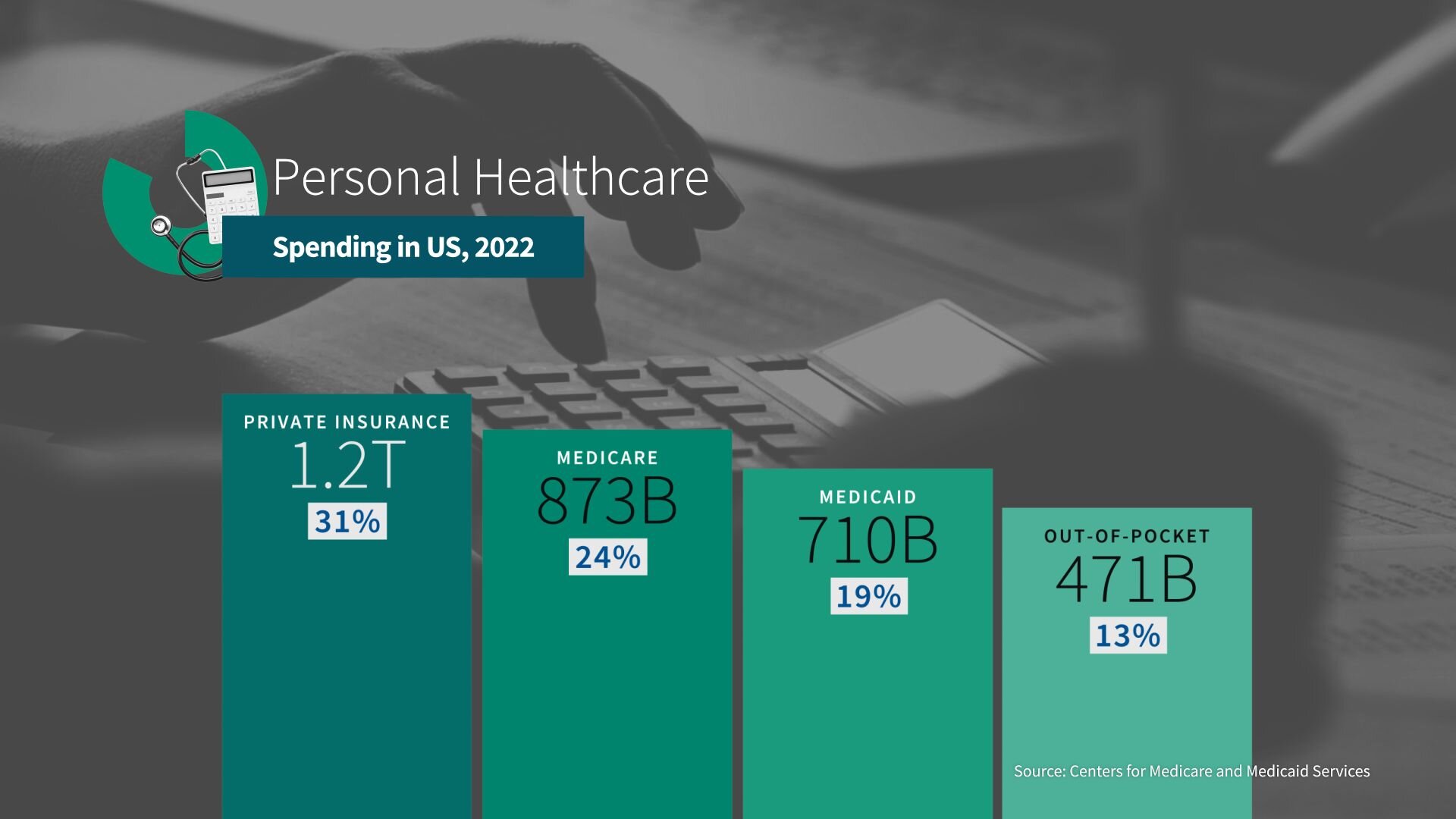
So where did all this money go?
Hospitals accounted for 37%. Physician and clinical services are 24%. And then prescription drugs were only 11%.
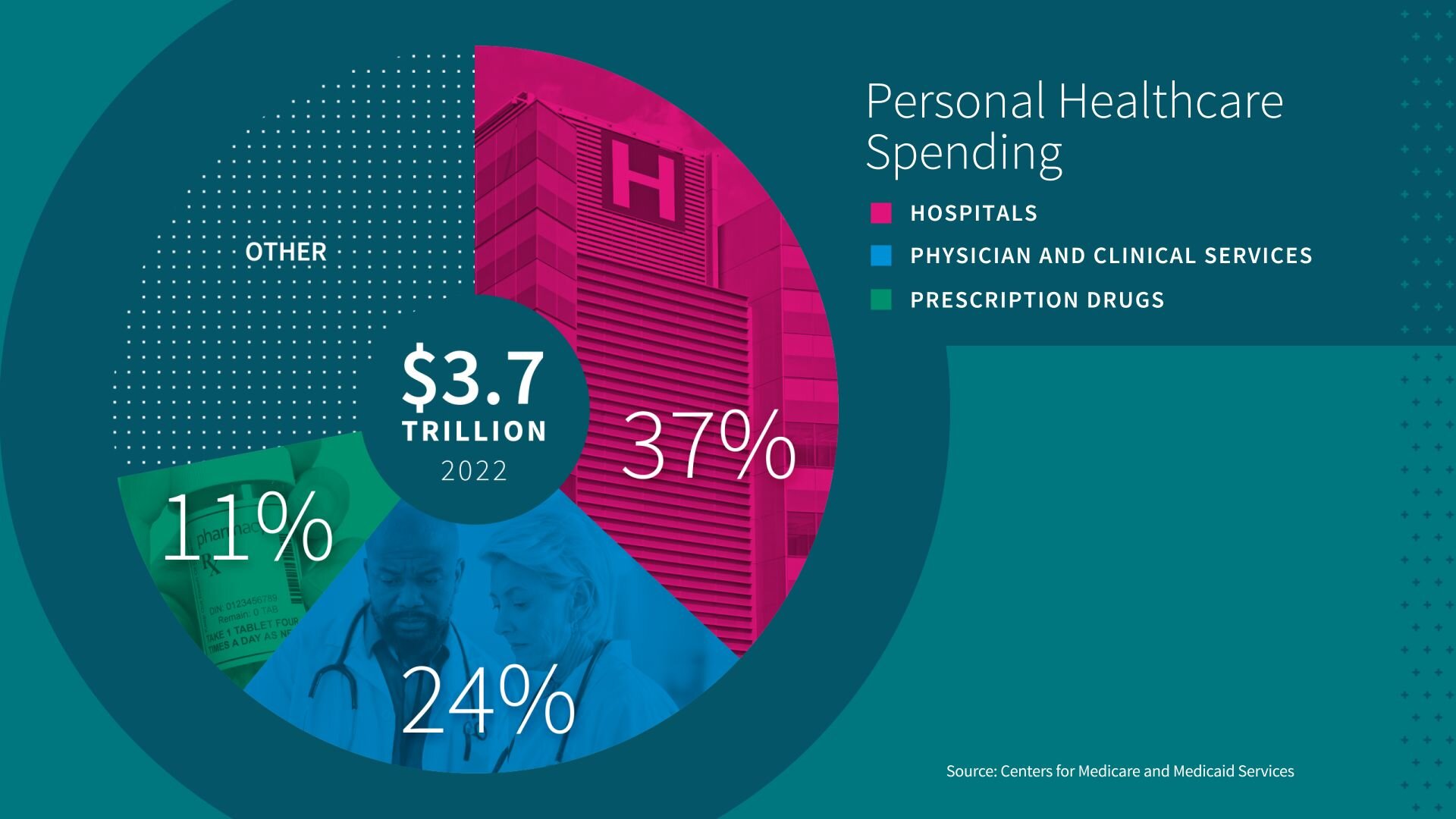
The average amount spent on healthcare per person per year went from $3,000 plus in 1980 to more than $11,000 in 2022.
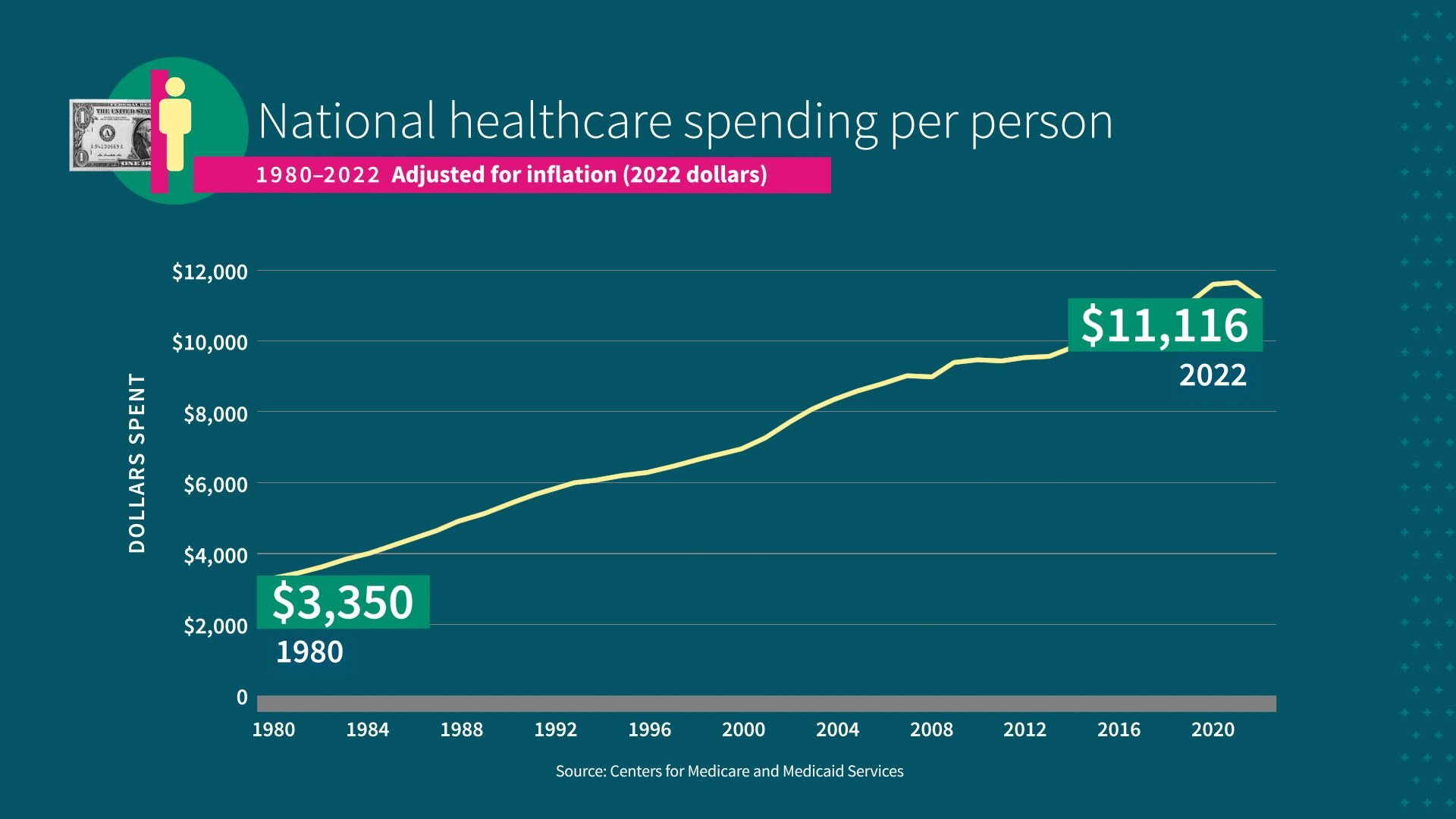
One factor: The 65 plus population went from nearly 26 million people in 1980 to over 57 million in 2022.
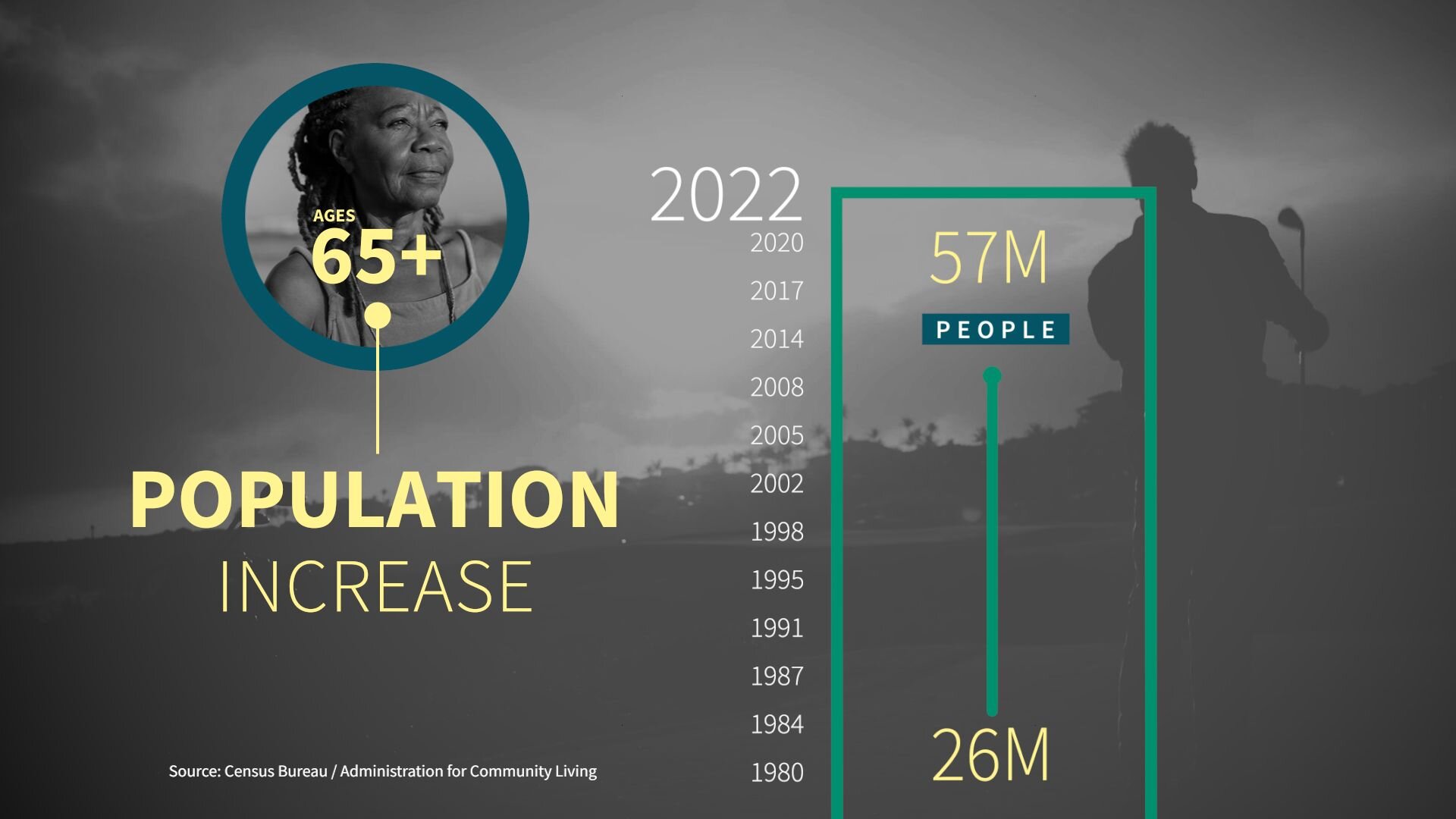
This does not mean people are paying $11,000 a year themselves.
On average, just over $1,400 of that came out of our pockets, not accounting for the premiums.
Next is physician and clinical expenditures out of our pockets. Then dental services, prescription drugs, nursing care facilities, hospital care, and durable equipment like crutches.
We are spending more than ever on prescription drugs, but individuals are paying a lower percentage of it out of our own pockets.
Between 1980 and 2022, Americans went from spending $135 to $170 out of pocket per person per year. And then insurance pays the rest.
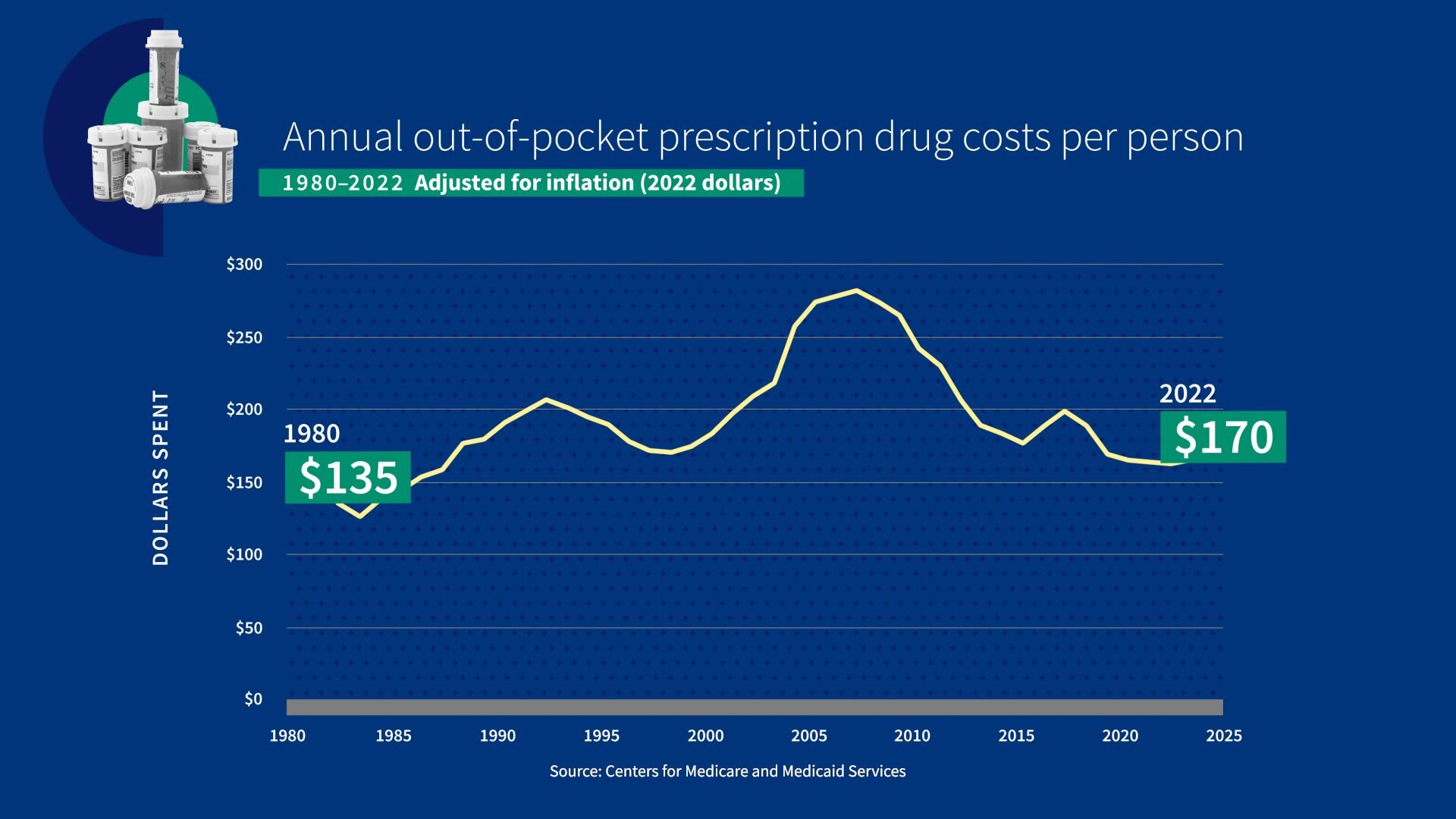
This really surprised me, given all of the discussion of drug prices.
Now let's talk about premiums. Americans shell out $760 billion in premiums each year to private and government insurance programs.
Of this, employees paid around $300 billion in premiums. People get insurance through the health exchanges established by the Affordable Care Act pay $70 billion.
Americans pay into Medicare, both while they’re working through payroll taxes and also through premiums that you pay once you start receiving Medicare benefits.
Combined, that amounts to $339 billion a year.
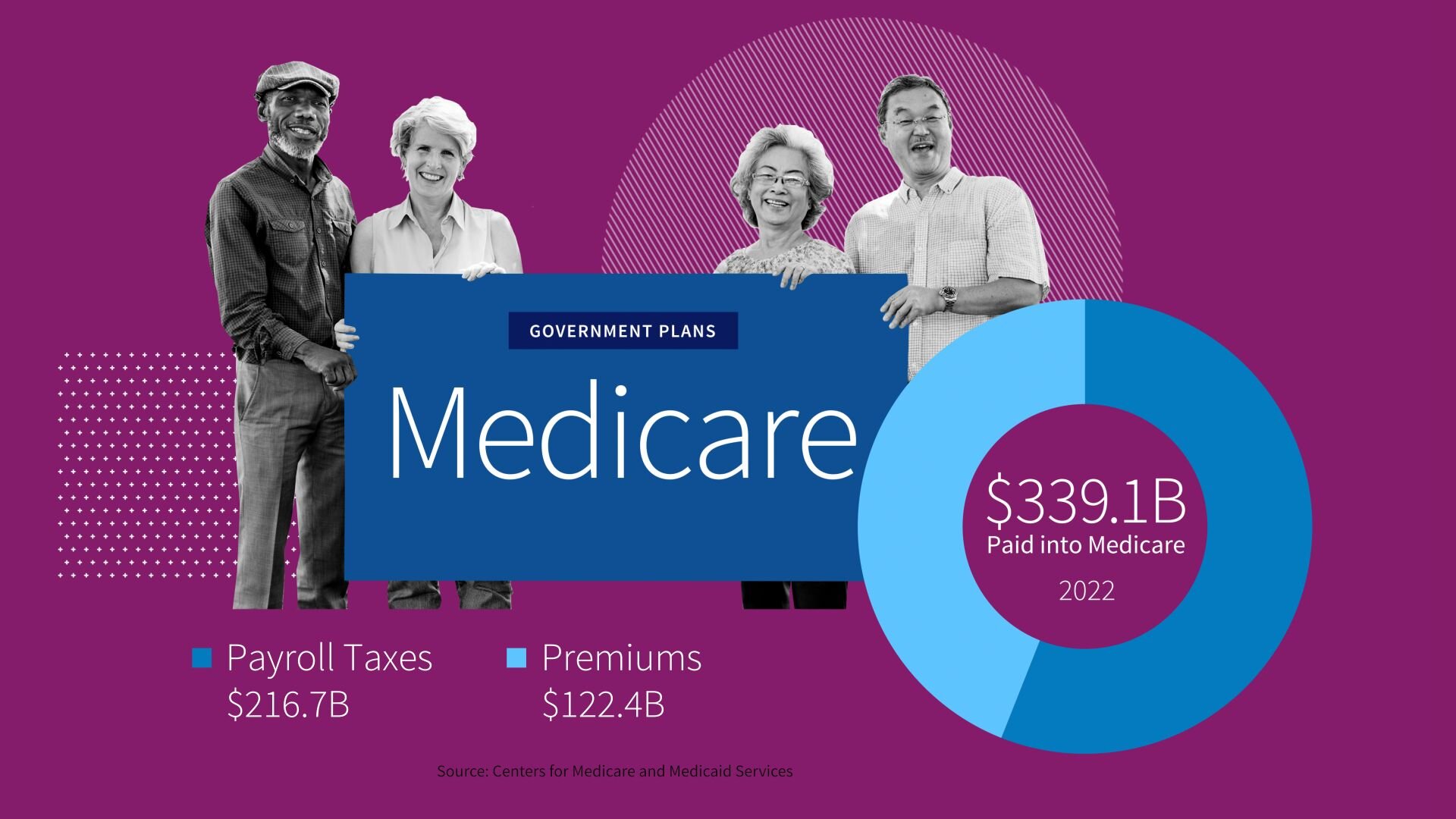
And some people have additional forms of property and casualty insurance covering some health care costs amounting to nearly $43 billion.
Add these premiums to the other out-of-pocket costs, and American households pay $1.2 trillion into the healthcare system. That equals just under $3,700 per year per person for every person in the country.
What about the insurers themselves?
For this, let’s look at the administration costs. The total administration and net costs of all insurance programs in 2022 was $334 billion.
Medicare had the highest administrative costs, with Medicaid close behind, and private insurance was just $644.
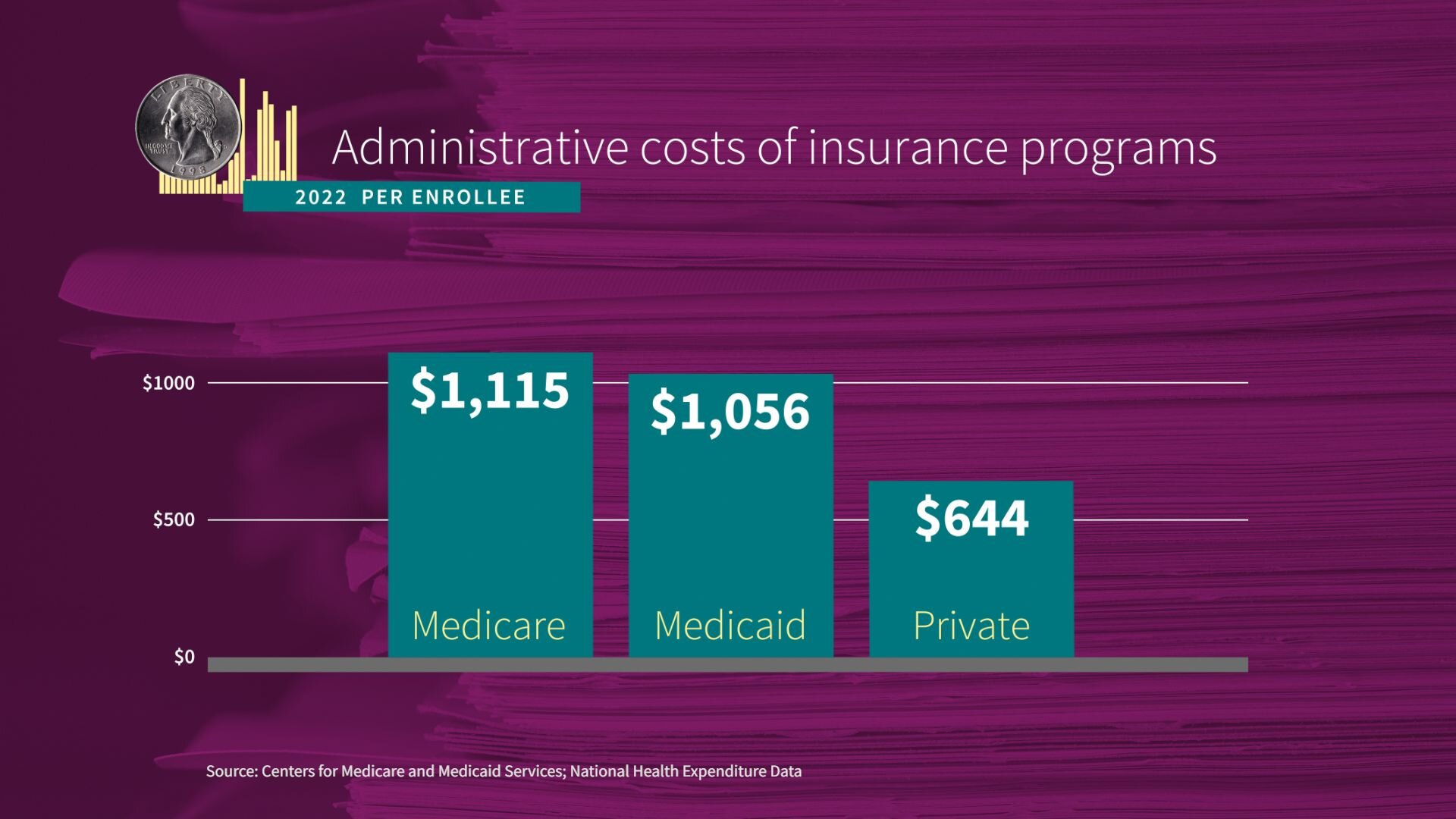
This really interested me, given how much discussion there is about how private insurance companies' profits and costs are driving health care costs.
Let’s do a fact check. Adding this all together: In 1987, households paid 37% of health care costs. Today, they pay 28%. Private companies paid 23%, but today pay 18%.
State governments paid and still pay 15%, and the federal government went from 17% of the total in 1987 to 33% today. The largest portion of the bill for health care.
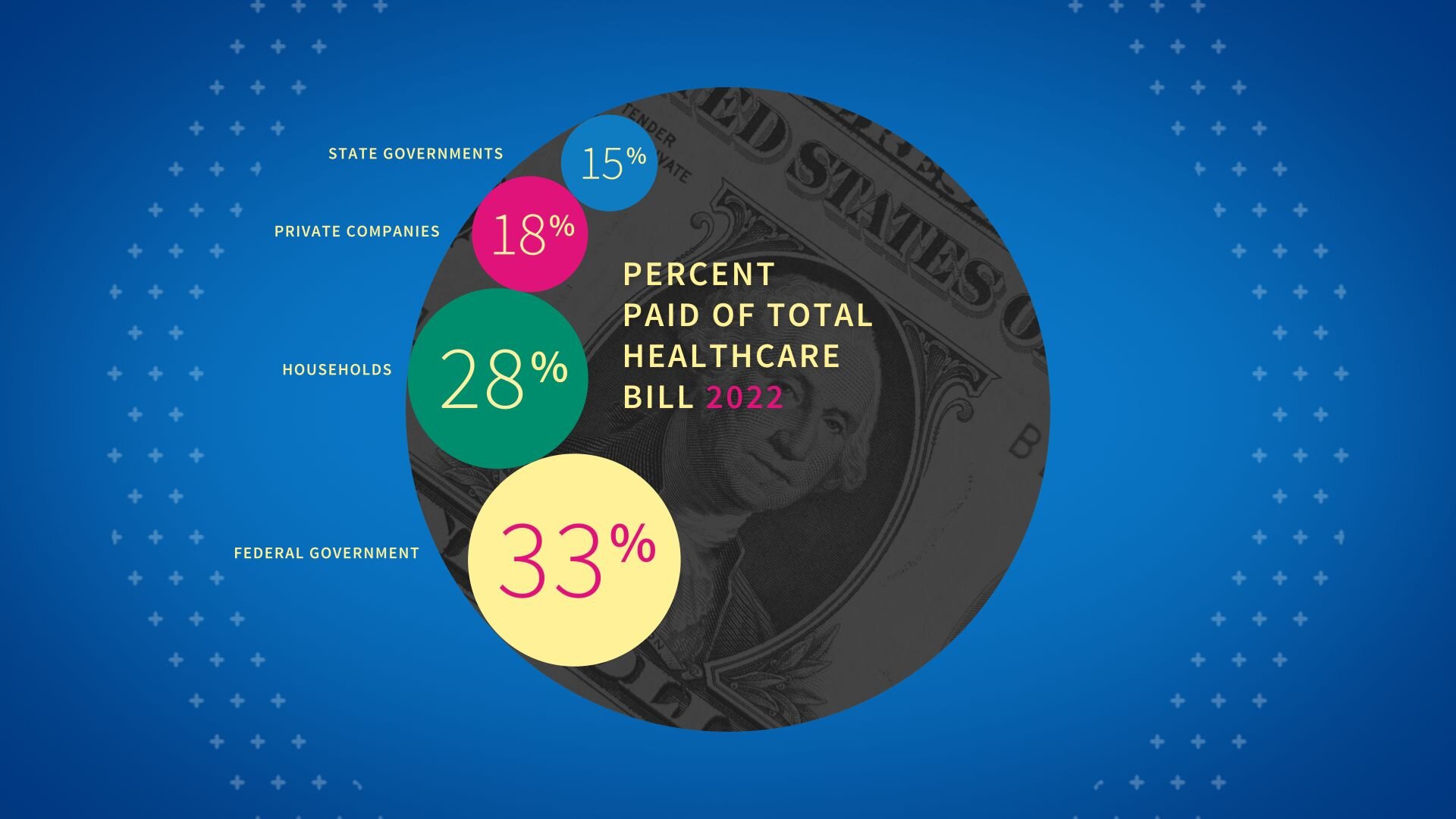
That’s it for health and health care — very complicated topics that touch all of us in very real and very personal ways.
I hope you agree. The more we know about health care, the better voters we can be. Just the facts. You decide what you believe.
Page sources and methodology
All of the data on the page was sourced directly from government agencies. The analysis and final review was performed by USAFacts.
Census Bureau
Population Estimate and Projections and 3 others
Centers for Disease Control and Prevention
National Center for Health Statistics and 3 others
Our government is complex. Our data doesn’t have to be.
Subscribe to our weekly newsletter to get data-backed answers to today’s most debated issues

